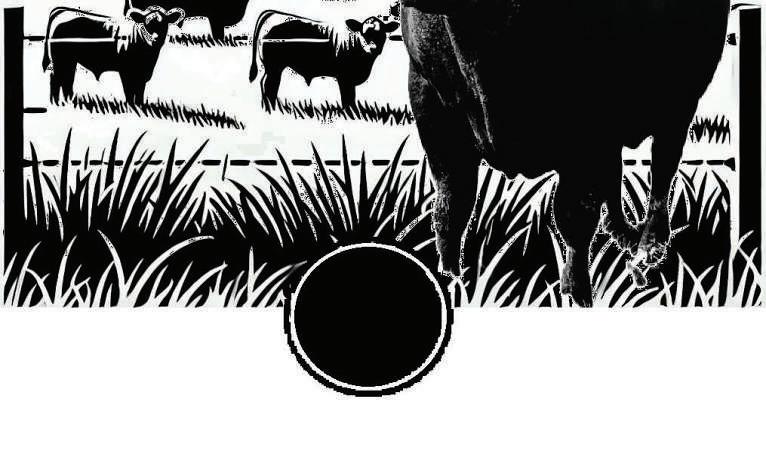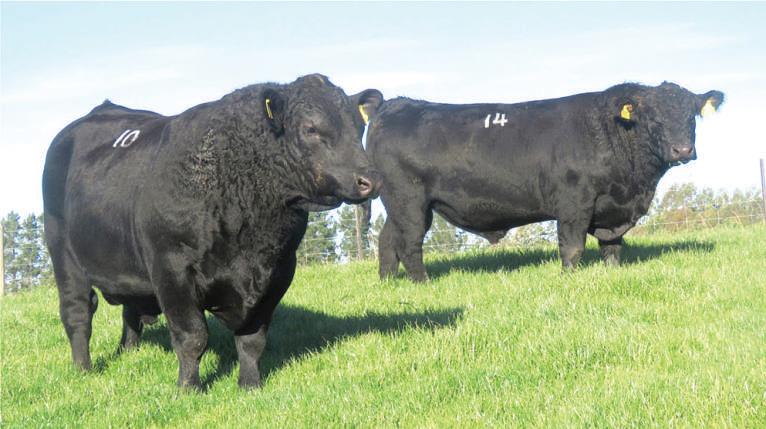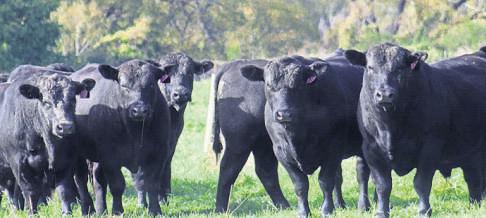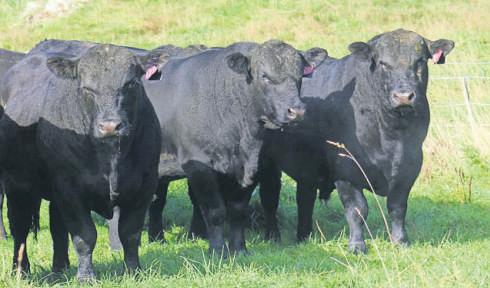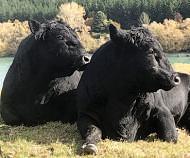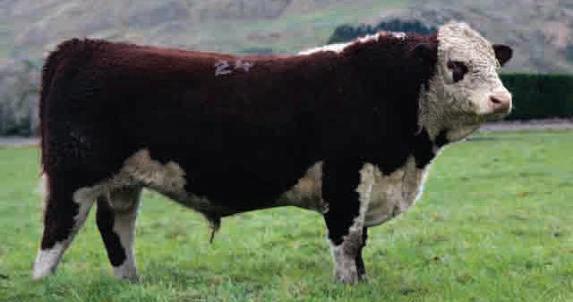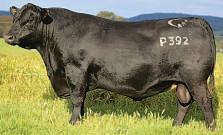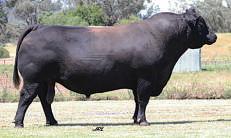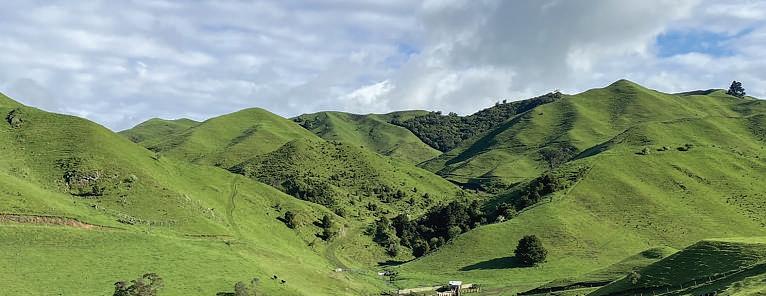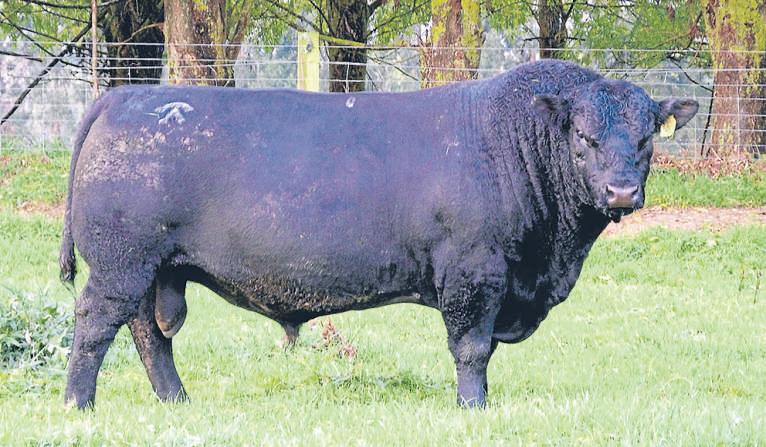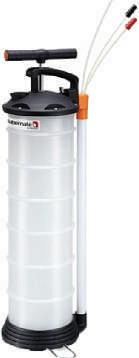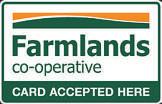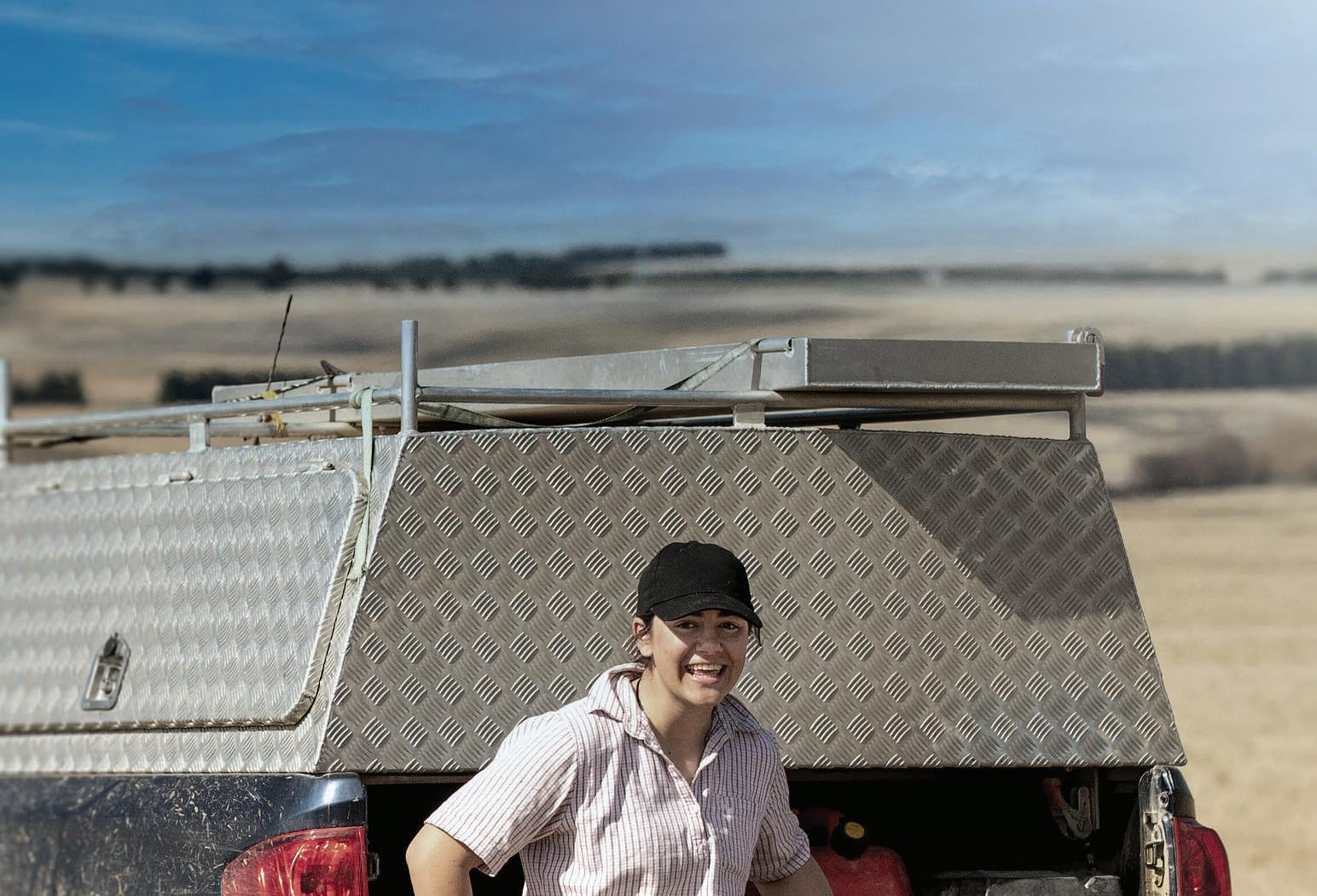

























Unit d $9 billion on Kiwi annually exports
Th United States spends nearly $9 billion on Kiwi agricultural products annually, but these exports could be hit by even more tariffs. P6



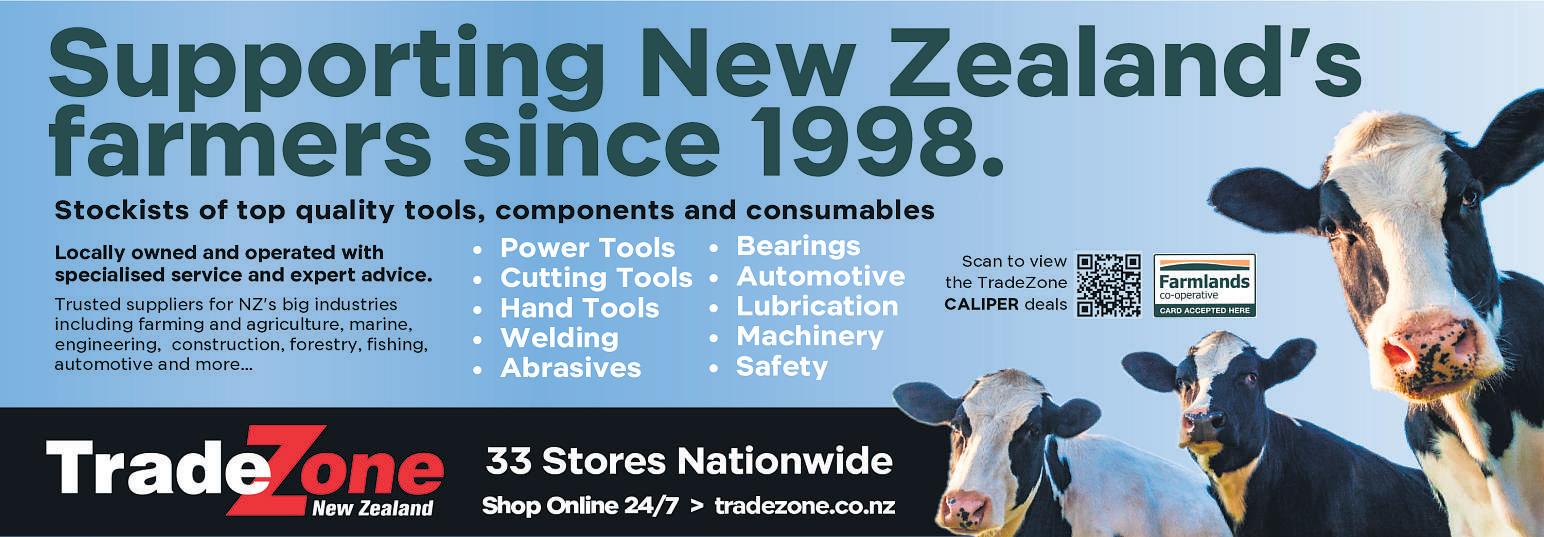

EnjoyGood George’s award-winning brewsand all-dayliveentertainment at this heated indoor venue at Fieldays.It’sthe perfect spottosit down, catchup with friendsand family,have a yarn aboutwhat you’ve seen and donesofar, andplan the rest of yourday.

Chris Tobin
More large beef and sheep farms will be converted into forest plantations after recent overseas investment approvals, Toitū Te Whenua Land Information New Zealand says.
Kauri Forestry LP – a New Zealand limited partnership established as part of Christchurch based Craigmore Sustainables Group, with 69% Swiss ownership and 31% German ownership –has been given the go-ahead to convert two former sheep-beef farms in the North Island.
Another large sheep beef farm in Clutha, Otago, has been acquired by Netherlands business interests and will be converted into mainly pinus radiata forest.
Kauri Forestry LP has bought 496 hectares at Pukehuia Rd, Arapohue in the Kaipara district, for an undisclosed sum from Keith, Craig and Nigel Gravatt, trustees of Maungarata Farms Trust
The land has mainly been used for sheep and beef grazing, with 60ha in pinus radiata.
A total of 290ha will be converted into plantation forest, mainly pinus radiata, with planting scheduled to start this winter.
Kauri Forestry LP has also bought, for an undisclosed amount, a large-scale hill country station 65 kilometres south of Napier comprising 1518ha at Kairakau Rd, Elsthorpe, from Waipuna NZ Ltd
Again, the land was mainly used for sheep and beef grazing with 28ha in poplars, softwood and indigenous trees
A total of 832ha will be converted into commercial forestry in mainly pinus radiata, with planting starting in the 2026 winter.
Ingka Investment Forest Assets NZ Ltd and Ingka Investments Management NZ Ltd has bought 643ha of land and finishing station at Morris Saddle Rd, Owaka Valley, Clutha, a sheep-beef farm
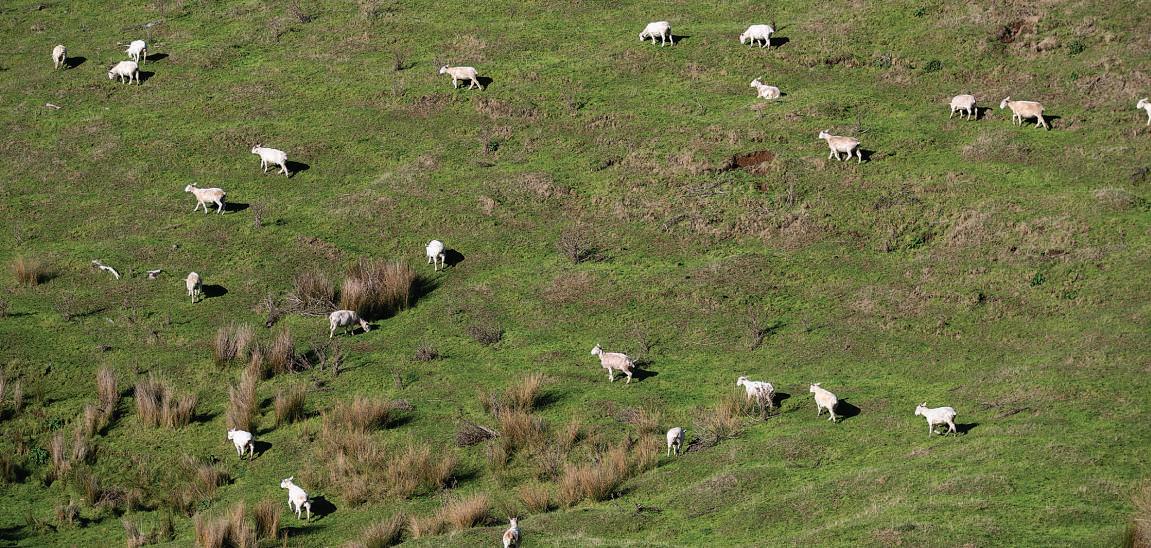
with the purchase amount not disclosed.
The new owners intends to convert 657ha into a pinus radiata forest
Kauri Forestry LP has also been given a “standing consent” under a “Special Forestry Test”, allowing overseas investors with a proven track record to make forestry investments without needing prior approval for each transaction for 10,000ha of land in up to 40 transactions, by June 12, 2027.
A requirement was the Overseas Investment Office (OIO) had to be advised after each purchase.
Kauri Forestry LP advised under its standing consent of buying 216ha at Haumanga Rd, Broadwood, for $4.5m from Nelly Forests Ltd Partnership. It intends to continue to use the land for forestry.
In another standing consent, Kauri Forestry LP advised it had made a second acquisition of 449.6ha at 1819 Mataraua Rd, Otaua, in the Far North District, from Tukurua Forest Ltd Partnership for $9.2m. It will continue to use the land for forestry.
Meanwhile, Stafford Carbon Official Opportunity Fund (SCOOF), of the United Kingdom, had bought four forests comprising 1446ha at Waipukurau, Eketāhuna and Pongaroa from CQuest Ltd Patnership, as well as 395ha at Kerr Rd, Glen Murray, in Waikato, from Otorohaea Ltd.
Approval has also been given to Millari Assets Ltd, of Australia, to buy 25ha of land and a timber mill which closed in 2024, at Matawhera, Gisborne, from Juken NZ Ltd, of Japan, for $21.5m. The mill will be recommissioned.
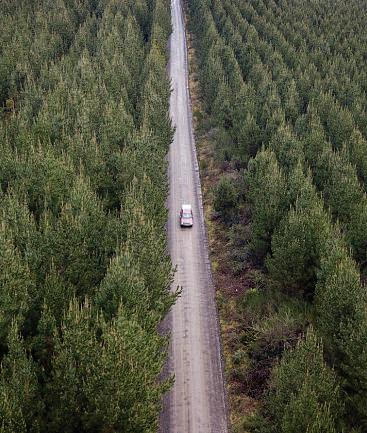

Sonita
sonita.chandar@stuff.co.nz
Kwok
HEAD
Kate Boreham 021 279 5361
kate.boreham@stuff.co.nz

Sonita Chandar Editor
New Zealand’s small trade deficit has not kept us immune from being slapped with extra United States tariffs.
Trade with the US is significant. We have quotas and already paid tariffs. Now it will cost us 10% more and it is unclear how quotas and these tariffs will work together.
No country has been spared. Spare a thought for the poor penguins and seals on the otherwise uninhabited Heard and McDonald islands near Antarctica, who are now required to pay a 10% tariff.
Wonder who the genius was who came up with that idea? And how exactly do the seals pay and with what? Their fish? It’s impossible to even begin to comprehend.
Donald Trump wants to be known as the president who fixed things in the US, returning manufacturing and jobs to the American people, making that country prosper and a greater power than ever before. But so far, all he has
accomplished is the creation of chaos, confusion and mistrust. He is well aware the whole world is talking about him and he loves it.
Trump is coming and going with his revolving door of tariffs, so who knows what he will do next or who will be slapped with further tariffs.
US beef production is at a 70-year low so they need our beef and should think again about the tariff they are imposing. Is the US going to charge consumers more? Who will have to pay more to cover the extra tax? No-one really knows.
Trump is inviting countries to come to the table and negotiate with him and his administration The tariffs were poorly thought out and the implementation of them poorly executed. It got people’s backs up and rightly so.
Whatever happens to trade between the US and China – facing hefty tariffs – could be a positive for Kiwi exporters if China stops buying from the US and looks to New Zealand to fill the gap.
However, these tariffs have the potential to hurt some Kiwi exporters.
The wine industry is already grappling with softer demand. Higher prices could hit that demand even further.
There are many questions on how tariffs will play out, who will pay or take a hit in the pocket, and where things will land.
One thing we can be certain of is this: We are on a rollercoaster ride of economic and trade upheaval. And we’d like to get off

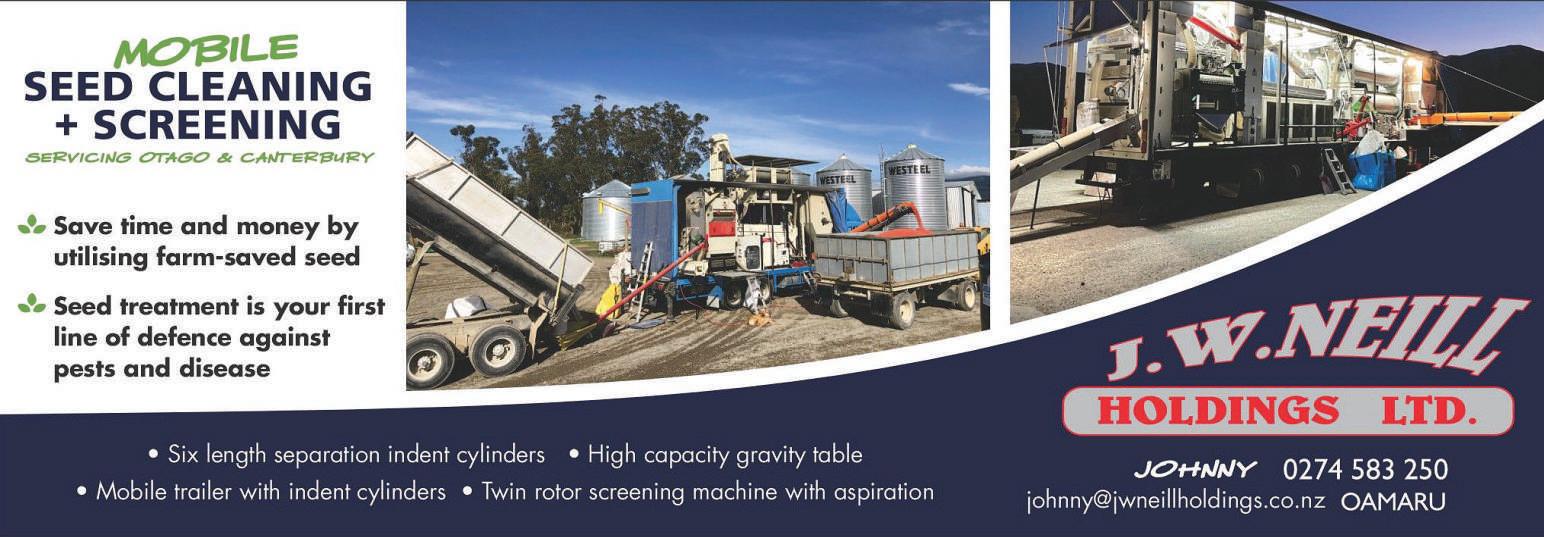
Doug Edmeades
The pastoral sector contributes about $38 billion annually to New Zealand’s coffers. It is the single largest “business in town”, so to speak. And it depends on growing quality pasture.
Two major scientific reviews have been published in the past year documenting recent progress. One is entitled “Evaluating pasture forage plant breeding achievements: a review” and the other is “Pasture productivity in New Zealand 1990-2020: trends, expectations and key factors”. The lead authors are experienced and well-respected New Zealand agronomists Dr John Caradus and Dr David Chapman.
Unfortunately, the news is not good, if you are a farmer.
Caradus highlights the problem in his conclusion by noting that there is a “possible disconnect between observed plant breeding achievements with pasture and forage plants and their subsequent on-farm impacts”.
Chapman focused on pasture productivity, noting that the gains in pasture productivity made in the past 20 years could be explained simply by the increased use of fertiliser N and the concurrent increase in stocking rate. After noting the substantial progress in pasture productivity achieved during 1950 to 2000, he suggested that “the benefits of new technologies (eg improved cultivars) are
not being captured at the farm level”.
My layman’s interpretation of all of this is that while plant breeders may have made progress at the small plot scale – and this shows up in their glossy pamphlets – these improvements have not been captured at the farm level.
From my interactions with farmers over the past 20 years, I am sure that most will totally identify with these sentiments.
Indeed, I have listened to many of their sad stories I can hear them now: “I have spent big dollars on these new cultivars; they look good to start with but that does not persist, and now I am back to square one!”
How is it that such an important major industry can be floundering as it is?
To find an answer, I think that we must go back to the tragedy of the 1990 science reforms. When the Crown Research Institutes were set up, important farmingrelated research organisations, like MAF Research and DSIR Grasslands, were disestablished. Chapman takes up the story in his review:
“Thereafter responsibility for funding applied grassland R&D (including plant breeding) gradually passed from government to the industry levy bodies and the private sector (eg commercial plant breeding companies) with a consequent shift in emphasis to shortterm solution-focused research and the gradual demise of long-term livestock systems research trials in locations such as Ballantrae, Whatawhata and Winchmore.”
There is now no independent plant
breeding research in New Zealand and the cost of evaluating new cultivars in a farm-system setup are prohibitive. These developments mimic exactly what has happened in my own field of research – soil fertility, fertiliser and pasture nutrition.
Both sectors –fertilisers and cultivars – are vital for the ongoing development of New Zealand’s $38 billion pastoral sector. And both are underpinned by the need for sound science.
The curse that the 1990s reformers placed on these vital sectors is that there is now no independent voice in either sector. a consequence, both appear to act with impunity, introducing fertilisers that do not work as claimed and pasture cultivars that do not persist.
despite the fact that most fertilisers are sold as mixtures.

The reformers argued, in those heady days, that government should leave these big industries to regulate and monitor themselves. The fertiliser industry has its voluntary FertMark scheme but this applies only to generic fertiliser products and it does not consider fertiliser mixes,
In any case, it is focused on truth of labelling and not agronomic effectiveness. Thus, new-age urea products, which the nitrification bitor agrotain, are launched onto the market even though the science does not support their claimed benefits. And the plant breeding sector has the Forage Value Index (FVI) to compare the performance of ryegrass cultivars. It does not consider the role of clover, which I would gue is the most tant component in any ver-based pasture. And in any case the merit of the FVI scheme has recently been questioned.
I will leave you with Leonard Cohen’s words from one of his profound songs: “Ring the bells that still can ring. Forget your perfect offering. There is a crack, a crack in everything. That’s how the light gets in.”
New Zealand’s science system is currently under review – let’s hope that some light gets in!







and nuts, what’s going to be affected by the tariffs?
By Susan Edmunds of RNZ.
Exporters around the world are still digesting exactly what US President Donald Trump’s moving array of tariffs will mean for them and their businesses.
But what are New Zealand’s biggest exports to the US, and how might they be affected?
Last year, exports of goods to the US were worth just under $9 billion. That was 12.7% of all goods exported, the second highest.
The US has become a much more significant destination for exports in recent years. In the 12 months ended December 2024, these were the most exported goods to the US.
Meat and ‘edible offal’ – $2.5 billion
Westpac chief economist Kelly Eckhold said beef was a tricky import for the United States to replace.
Both New Zealand and Australia were exporting large amounts of lean beef to the US, he said, which was then mixed with fattier beef to make burgers and mince. “They do that because it makes the products better so it’s actually not that easy for Americans to not buy our beef because they don’t have the same product, basically.”
Gareth Kiernan, chief forecaster at Infometrics, said beef was $1.8b of the meat exports to the US and 42% of all of our beef exports were going to that country
But he agreed that US consumers were not likely to be able to switch to home-grown beef easily.
“Beef cattle numbers there are at a 70-year low. Therefore, the effects on returns to beef farmers could be relatively limited. That’s been partly behind the growth that we’ve managed to achieve there over the last few years. And put it this
way they’re still going to continue eating
You know, they like their hamburgers, don’t they?”
ASB chief economist Nick Tuffley said how much impact a tariff had would depend on the dynamics of what was being exported, what the alternatives were for the US and whether the export was a final good or a part of something more substantial.
He said if beef was sold through fast-food chains, it would only be a percentage of the meat in each burger affected
“The impact on the final consumer price is not going to be as substantial.
“That’s one example where with beef it may be reasonably resilient, at least the hamburger part, because it’s just one small part of the bit people are eating.”
Dairy – $982.9 million
When it comes to dairy, the bigger impact may be on what happens to trade between the US and China, which is facing hefty tariffs.
Eckhold said there was significant trade of both dairy and beef between the two countries.
“That has the potential to be significantly disrupted with the very high level of tariffs in place.”
If China did not want to accept those imports anymore, they would have to come from somewhere else and that could benefit New Zealand, he said.
Beverages – $742.7m
Wine makes up the majority of beverage exports to the US
“For wine, the potential tariffs come at a difficult time, as the industry has already been grappling with softer global demand and softening prices over the last couple of years,” Kiernan said.
“Higher prices for foreign wine in the US could easily see consumers switch from drinking a Hawke’s Bay syrah to a Californian zinfandel, further hitting demand for our product.”
He said wine demand had dropped in recent years anyway. “We’ve all stopped drinking quite as much as we did in the pandemic when we were stuck at
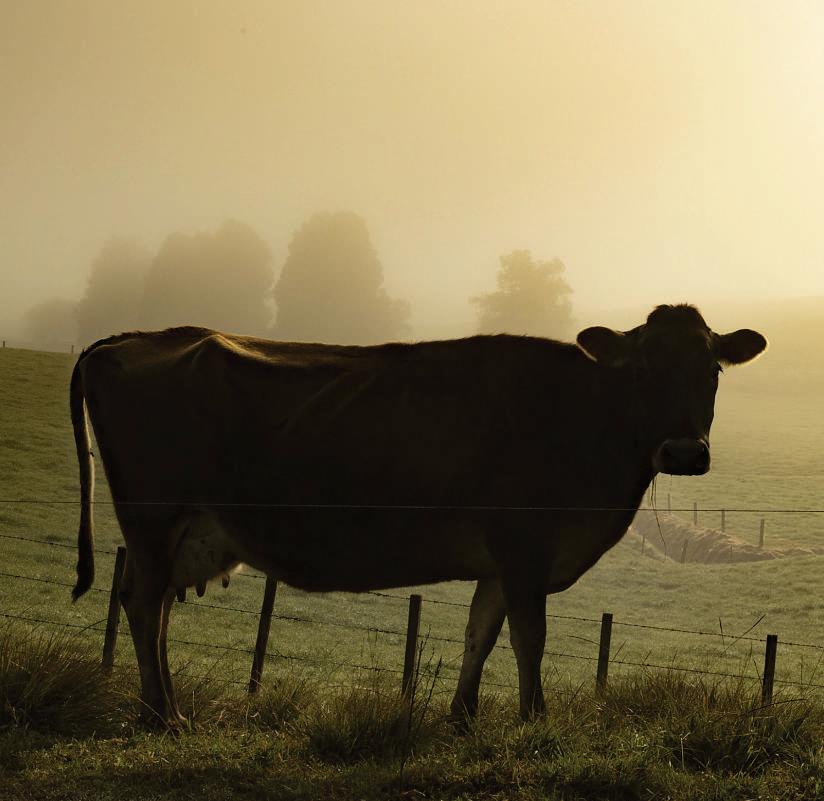
home. That’s a global story really, but it’s much easier for them to switch to American-produced wine given the sort of current supply and demand dynamics and the broader market.”
Tuffley said wine had all its value added in New Zealand.
“In that scenario that’s where the potential impact of the tariff could be bigger because it’s going to be harder for the end retailer to pass on the impact if they do mark it up
“If it’s lower down the value chain where there’s lots of competition and people are
quite price sensitive a price increase might mean sales slow quite a lot or it may be there is a lot of pushback from the importer saying ‘we can’t sell this unless you are prepared to drop your price to cover a fair chunk of the tariff’. In that case you’re getting a volume hit or some degree of a margin hit.”
Mechanical machinery – $683.7m Tuffley said how much mechanical machinery exports were affected depended on how critical the use was it was put to and whether there was a US alternative.
Katie Townshend
New Zealand’s fishing industry is watching with interest to see what the fallout will be from US President Donald Trump’s tariffs, Seafood New Zealand chief executive Lisa Futschek says She was in Nelson last week for a board meeting and to meet with local fishers, and labelled the region a “hub” for the industry.
“Nelson is a real role model when it comes to, can we call it the blue economy? There are so many organisations and institutions that are coalescing around our sector, so I’m just seeing such fantastic innovation happening.”
But, while Nelson could be “justifiably proud of its seafood industry”, nationally the industry was facing challenges to become economically sustainable, as it was still dealing with the fallout from Covid and Cyclone Gabrielle, Futschek said.
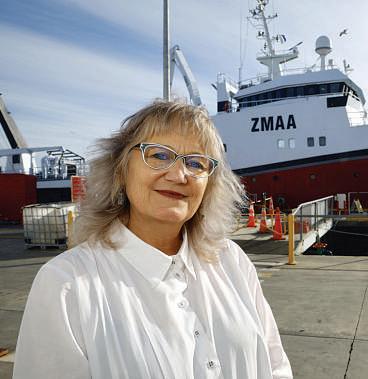
“We’re in recovery mode, and then on top of that we have, you know, additional geopolitical considerations like the Trump tariffs to kind of manage on top of all of the other things.”
Seafood was a $2.2 billion export industry for New Zealand, and the United States was its second biggest export market. In recent years, the market’s value had grown, she said.
Now they were closely watching to see what the domino effect of the US tariffs would be.
“To be honest, it is a bit of a movable feast.”
The impact for New Zealand could come when competitors were displaced from the American market, she added.
“Then they find an alternative in Southeast Asia, for example, where we’re also competing for a piece of the pie.”
While the aim was to become economically sustainable, the margins were “just getting tighter and tighter”, she said.
She hoped amendments to the Fisheries Act would help make it easier.
“They are common-sense changes – we welcome them.
“They bring our legislation up to date and we see real advantages from an economic perspective for our sector, at the same time as continuing to have that
really strong focus on sustainability.”
Minister for Oceans and Fisheries
Shane Jones announced the reforms in February, proposing to let fishing boats with cameras or observers dump unwanted catch at sea, as part of wider reforms to “boost the productivity, boost the jobs and create more export income”.
The proposals were developed following a seafood industry forum last year.
But groups such as WWF New Zealand say cameras are vital, and should be rolled out further, pointing to data from the cameras on boats programme, which showed under-reporting of discards and protected species bycatch by commercial fishers.
Futschek said one of the industry’s greatest challenges was changing public perception.
“I have seen an absolute sea change, if I can call it that, in terms of commitment of our sector to sustainability, to mitigations for interactions with protected species, to commitment to innovation, adoption of new technologies, and so on.”

Albuminoids, starches and glues – $448m Electrical machinery – $439m
Optical medical and measuring equipment – $390m
Much of Fisher & Paykel Healthcare’s exports are likely to be captured in this category.
But Eckhold said he had been at meetings recently where firms who were exporting medical equipment into the US were concerned about what the tariffs might mean.
Both

“For wine, the potential tariffs come at a difficult time, as the industry has already been grappling with softer ... demand
He said while the volumes were not huge, it illustrated that a wide variety of trade would be affected.
Wood – $370.7m
Fish – $334.1m
Fruit and nuts – $307.1m Tuffley said seasonality drove a lot of US imports of fruit and nuts.
He said it was mainly kiwifruit and apples being sold into the US for its off-seasons.
Kiernan said the US could end up priced out of the market for fruit out of season.
Infometrics’ Gareth Kiernan
Eckhold said there was still a lack of clarity about how the regime was going to work in aggregate
He said the US worked with a system of quotas that applied to countries and different sorts of products. Exporters he had spoken to were not clear how those quotas would work in conjunction with tariffs
He said it was also still uncertain how
much of the tariff would be passed on to US consumers and how much would be carried by the exporters. Firms were waiting to see what happened, he said. “No-one wants to be the first person to put their price up.”
Tuffley said the main competition for New Zealand exporters would be US suppliers. Those from other countries were facing the same tariffs, or greater.
In some cases, New Zealand companies might look at options to shift some production to the US, if the cost of doing so was less than the cost of the tariff.
But he said a key question would be what happened to the tariffs in the future. There were questions about whether they would outlast Trump’s “negotiation” phase, he said, or whether they would remain in place beyond his presidency.
“That matters a lot because it wouldn’t be worth spending a lot of money to find alternative solutions, only to find the rules change down the track. It’s hard to figure out what the optimum long-term solution is to enact when you have very little clarity around what tariffs we are facing and for how long.”
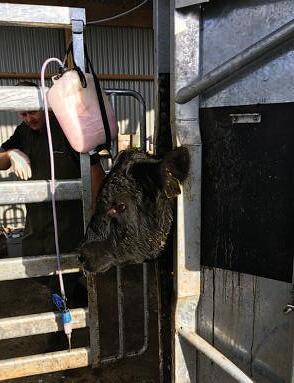

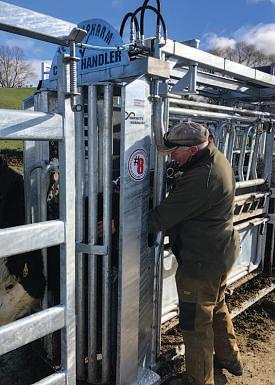
TH2141 28/01/25

Chaperon business adviser Gordon Stuart sits down with renowned economist Cameron Bagrie to talk Trump and tariffs.
How else can you possibly explain the wild movements we are seeing at present across global markets with equities on a yo-yo: down, down, up, down?
I’m not an economist but even I understand tariffs are bad for growth, and will add to US and global inflation. Free trade is gone and everyone loses. The hope is that we are not the biggest loser.
It is often said economists are better historians than forecasters, simply because their predictions are based on limited data
Does Trump even know what he is going to do next? I put some questions to economist Cameron Bagrie to get his perspective, as he is good at putting macro-economic things simply.
How messy is this going to get?
CAMERON: We don’t know, but the signs are not good. New Zealand follows the lead of the global economy. Remember the Asian crisis of the 1990s and global financial crisis of 2008/09? We were not immune.
There are real risks of a trade war with some big egos and countries at the table We have lived in a world where commercial imperatives were at the forefront of decision-making and trade policy. Risk premiums were low and there was reasonable certainty for decision making.
Unfortunately, brewing trade tension between China and the United States has been rising for a number of years
New Zealand’s chief trade negotiator Vangelis Vitalis has been openly talking about the end of the golden era for trade.
“Liberation day” was a bazooka announcement that geo-political and geo-strategic considerations are now trumping commercial imperatives.
Economic security is now aligned with the provision of national security That is a tectonic shift that markets were not fully factoring in. Now, they’ve woken up to it.
What does geo-political and geo-strategic mean?
The geo-political typically focuses on the political dynamics and relationships between countries. The geo-strategic is more focused on the specific military and strategic considerations that shape a country’s foreign policy and national security objectives. National security is a huge priority in the United States. Our own Ministry of Foreign Affairs and Trade
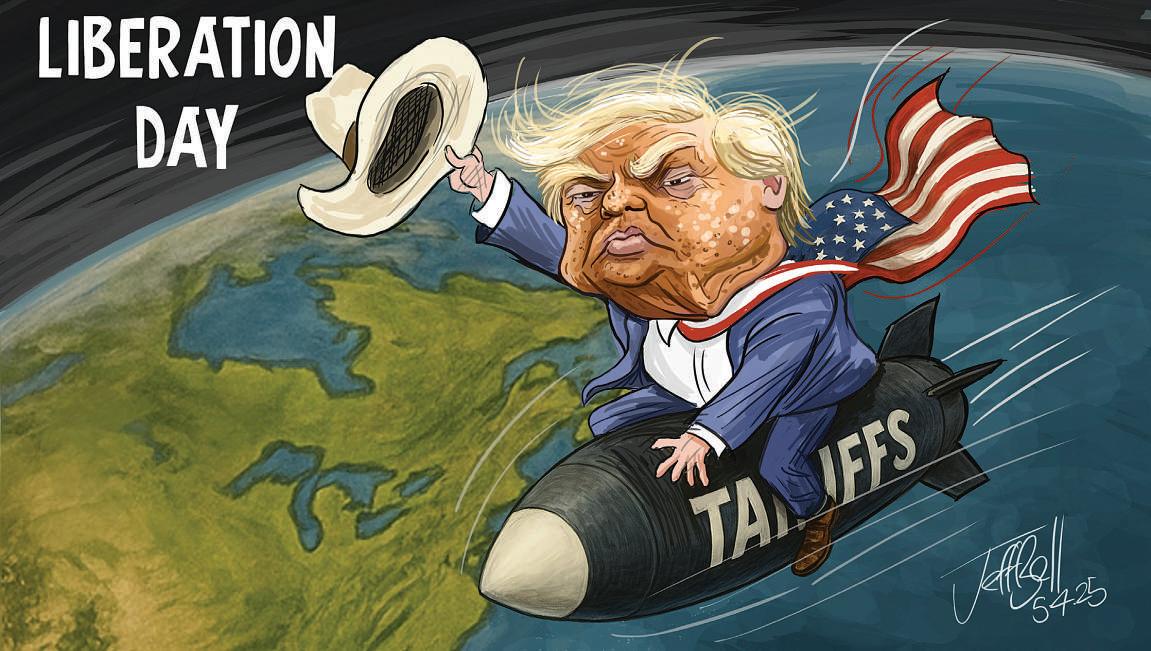
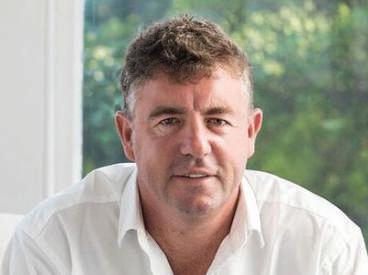
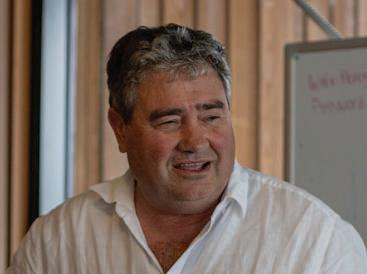
pointed out in 2023 in a key strategic document (Navigating a Shifting World), three tectonic shifts. Power was being used to challenge rules. A shift from economics to security, “a shift in which economic relationships are reassessed in light of increased military competition in a more securitised and less stable world” A shift from efficiency to resilience for supply chains
What will happen to interest rates? If this gets really ugly then the Official Cash Rate will be sub 3% It will act as an economic cushion. We hope deals are done, but there is a real risk of a global recession. Things are a little more complicated for longer-term interest rates because New Zealand rates take their lead from the
US equivalent. Because there is uncertainty over the inflation path in the US, we are seeing some stickiness (elevation) in longerterm interest rates.
The uncertainty coming out of the US has dented confidence in the US Treasury market and US dollar as safe havens. Longerterm interest rates are higher than they were in September last year. Foreign investors are reassessing their appetites for US assets
The US might hold most of the cards when it comes to trade negotiations, being able to slap on tariffs, but they also have a $1.1 trillion current account deficit to fund and are running a large fiscal deficit too
I suspect one of the reasons the US president backed down on the tariff front (apart from China) was because financial markets sent a clear message through
the bond market that they didn’t like the economic direction. Dysfunction in the bond market would be a real problem for the US economy.
What role is the NZD going to play? Hopefully it will act as a cushion and drop if it all goes to hell-in-a-hand-basket, and if we start seeing commodity prices fall sharply. However, there are now mixed signals Risk aversion, a weaker outlook for China and the global economy, and potential for inflation to accelerate in the US courtesy of tariffs suggest a softer NZD/USD. But confidence in the mighty USD has also been dented with all this uncertainty.
Will there be opportunities for NZ? Hard to say at this juncture. No-one wins out of a trade war. However, trade patterns and flows look set to shift over the coming decade. Trade will be diverted into different markets. New Zealand is going to have to bring its A game to the export table. What we do know is that New Zealand is pretty well placed strategically – our comparative advantages including locality, economic exclusive zone, natural resource base, weather, water and climatic conditions with the ability to grow grass. We’ve been largely tariff-free for decades and efficient. Many other countries which have engaged in unfair protectionist practices are now getting the message New Zealand farmers received in the 1980s: Stand on your own two feet!
Ijust read in the December issue that you’ve made the switch to ham from lamb for Christmas but I hope your Easter celebrations featured some lamb dishes. I came across that issue when researching some facts about the local lamb industry and couldn’t resist to reach out.
I’m a local food blogger specialising in lamb recipes at caroha.com. The
majority of my readers are in the US and I’m a big supporter and cheerleader of NZ-raised grass-fed and finished lamb.
I just wanted to put my blog on the radar for you if you ever wanted to share some recipe content from a local food content producer with your audience.
I’m passionate about cooking with lamb, covering many cuts and cuisines I love inspiring home chefs to try new
methods and flavours and go beyond the traditional roast or barbecue cutlets. For example, according to Tastewise social conversations about gyro have increased by 20.72% over the past year with lamb being a classic choice.
I feel NZ farmers and recipe creators could work hand in hand marketing their products with global food trends in mind.
Editors note: What I actually said is we made the switch from lamb to beef Wellington for a change, two years in a row and last year again none of us wanted lamb as it is something we have often living on a farm so we cooked a rolled roast beef with Yorkshire pudding.

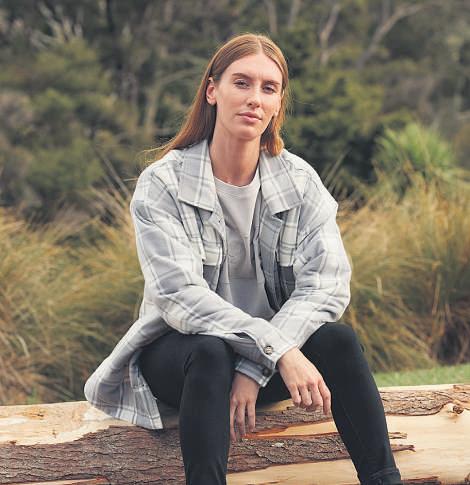



The new1972 by Barkers collection has been designed to deliver both style and function to NewZealand’s hardworking rural sector
With organic cotton and NZ Merino in elements of the range, it offers aunique blend of fashion and function.
Purchase in selected Farmlands stores or online

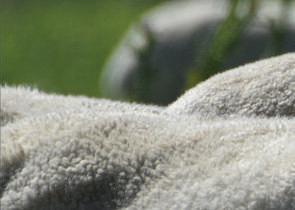

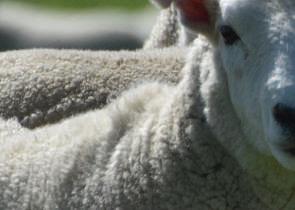
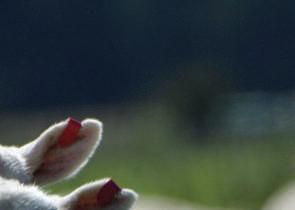
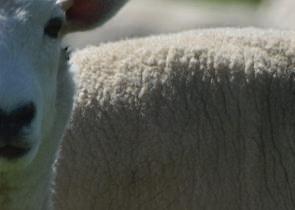
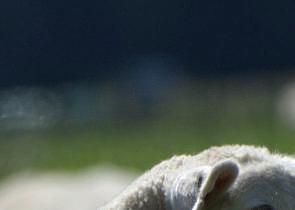

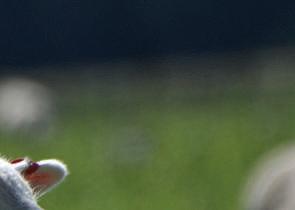
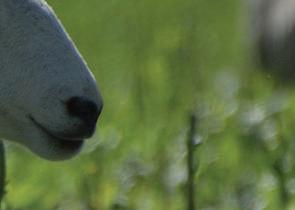





Industry leaders have given the Government a big tick and are applauding its commitment for the preference of wool in construction and refurbishment for government agencies.
From July 1, around 130 government agencies will be directed to use woollen fibre products in the construction and refurbishment of government buildings, wherever practical and appropriate.
The Government’s decision is a significant one and a strong vote of confidence in New Zealand wool growers and farmers.
The move will also have positive flow-on effects for local manufacturing. With New Zealand retaining and growing domestic wool product manufacturing for carpet, insulation, furnishings and acoustics, increased demand will support local jobs, enhance domestic manufacturing capacity, and reduce reliance on imported alternatives
It is being seen as a major step in support of the wellbeing of New Zealanders, our environment and rural communities. Carpets, insulation and furnishings made from New Zealand wool will generate significant economic benefits for the wool sector, rural communities, and the wider economy.
The planet will also benefit as wool biodegrades at the end of its long life The use of wool will lead to fewer microplastics in our oceans and synthetic products clogging landfills.
“This policy will help drive demand and value for wool, improving the profitability of sheep farming and vibrancy of our rural communities,” said Wool Impact chief executive Andy Caughey
The Government backing wool in buildings would give confidence to brands that choose wool.
“We’ve seen unprecedented product innovation using wool in recent years. This innovation is based on wool’s natural ability to contribute to healthy interior spaces, its technical performance, its biodegradability at end of life, and the important role sheep farming plays in the wellbeing of our rural communities.”
Beef + Lamb New Zealand chairperson Kate Acland said the decision demonstrated clear leadership from the Government in backing New Zealand’s world-leading farmers on the global stage
“This is great news for our sheep farmers, the many thousands of people who work in the wool industry from

A new government decision will ensure wool is no longer a struggling by-product but positioned to take its place as a pillar of our economy.
By Sonita Chandar.





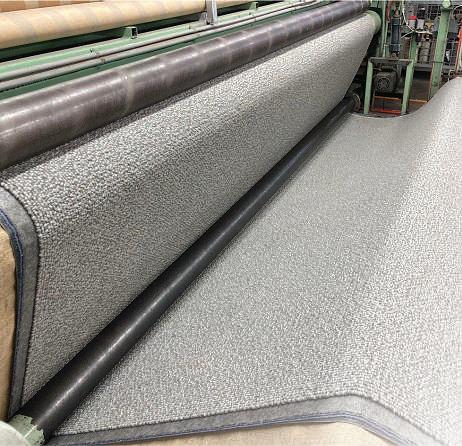

shearers to wool processors, and rural communities across the country,” she said.
“Creating demand for New Zealand wool supports farming families, strengthens rural economies, and helps build resilience across the sector. It’s also a reminder to global markets that New Zealand farmers are at the forefront of producing sustainable, high-quality wool.”
Acland also said the decision would help reinvigorate the wool industry, which would benefit not just rural communities, but the New Zealand economy.
“Wool in public buildings will showcase to New Zealanders the many benefits of this natural high-performing fibre over synthetic alternatives. Wool is sustainable, renewable, biodegradable, warm and comfortable.”
Wools of New Zealand chief executive John McWhirter said the Government’s support would be a timely boost for wool growers and New Zealand’s wider primary sector
“This is an excellent decision. It’s encouraging to see the Government recognising the superior qualities of wool flooring, which sets it apart from synthetic alternatives.
“Wool is a completely natural fibre – it’s safe for people with allergies and asthma, it offers exceptional fire resistance, and it provides natural warmth and comfort underfoot
“By promoting the use of wool in government buildings, the Government is not only supporting local farmers and
rural communities, it is reinforcing New Zealand’s global reputation as a leader in natural, sustainable fibre production.”
McWhirter added that government leadership in this area could create demand for New Zealand wool and help drive growth across the wool supply chain, from farm to finished product, while also highlighting the environmental benefits of choosing natural fibres over synthetics
“Importantly, this decision also sends a signal to other governments and global markets that wool is a progressive choice for sustainable building and interior design and that New Zealand is ready to meet the growing demand for high-quality wool flooring.”
Campaign for Wool NZ (CFWNZ) general manager Kara Biggs said the decision was a “massive relief”.
“We are ecstatic about this government policy. It’s this type of work that could really shift the dial for the entire New Zealand wool industry.”
CFWNZ was at the Beehive when Deputy Prime Minister Winston Peters, and ministers Nicola Willis and Mark Patterson shared the news that from July 1, new procurement requirements would see construction of governmentowned buildings that cost $9 million and more, and refurbishments of $100,000plus, using woollen fibre.
“It was a wonderful atmosphere,” Biggs said. “Everyone in attendance recognised that this is incredibly encouraging news for wool growers, manufacturers,
TheGovernment’s commitmentto usingwoollen fibreproductsin theconstruction andrefurbishment ofgovernment buildingswillgive growersandfarmer


innovators and consumers These are big projects, big budgets and lots of home-grown New Zealand wool being used instead of harmful, toxic, micro-plastic emitting synthetics.”
The strong wool advocacy not-for-profit has been vocal about – and instrumental in overturning – government agency decisions that had previously excluded wool carpets from being considered for public buildings, such as Kāinga Ora housing, due to the higher costs.
Nylon carpets were up to 34% cheaper than woollen carpets The decision to exclude woollen wool carpets and underlays was overturned in January
“This news is just what we were hoping for,” Biggs said. “For many years now, our strong wool growers have been pleading for the Government to choose quality woollen products when building and renovating state buildings.
“They know as well as we do that the benefits of wool are far-reaching and long-lasting – it’s natural, durable, moisture-wicking, flame-resistant, hypoallergenic and temperatureregulating.
“And these are attributes that will outlast the people living and working in these buildings today and tomorrow – we know that today’s policy decision will positively impact the next generation and beyond.”
Biggs hoped other businesses would follow suit and install New
A reduced number of farms are now required to have a freshwater farm plan in place at the end of the year.
By Rachael Kelly
The Government has reduced the number of farms that will be required to have a freshwater farm plan, but industry groups are cautiously optimistic about new changes signalled by the Government Federated Farmers said the changes were welcome, but the devil would be in the detail
Beef + Lamb New Zealand concurred. While it described the changes as encouraging, concerns remained for sheep and beef farmers because much of the detail was still missing.
Agriculture Minister Todd McClay and Associate Environment Minister Andrew Hoggard announced the changes on April 16, saying plans would still manage environmental impacts, but they would not be required for small blocks or for farms which used industry programmes that achieved equivalent environmental outcomes.
“Farmers shouldn’t have to complete multiple plans,’’ Hoggard said.
“The new system will also act as an alternative to local council rules and


“Farmers shouldn’t have to complete multiple plans,’’
Associate Environment Minister Andrew Hoggard says
consents where appropriate, allowing landowners to meet requirements in a way that suits their farm systems.
“We’re cutting the cost and complexity out of the system. Farm plans are useful tools, but they must be practical and matched to actual environmental risk.’’
Federated Farmers national vice-president Colin Hurst said a tailored farm planning system that took a risk-based approach would provide strong environmental protections without the over-the-top
Farmswhichalready haveindustry programmesthat achieveequivalent environmental outcomeswon’tneed afreshwaterfarmplan, afternewruleswere announcedbythe Government
KELLY HODEL/ WAIKATO TIMES
bureaucracy seen in recent years.
“For a farmer, this has the potential to be a game-changer, replacing the need for expensive and uncertain resource consents or constantly changing council rules.’’
The organisation welcomed the Government’s intention to have a new farm plan system in place by the end of the year, Hurst said.
“This is a really positive start, and will give farmers a lot of confidence but there’s still a lot more detail that we’re going to need to see.
“Farmers are expecting to see the Government has nailed down a streamlined system that is affordable, enduring, and responsive to different catchment priorities.’’
Questions remained over the certification of farm plans and who would pay for audits of compliance, Hurst said.
“We’ll be keeping a close eye on those issues, and working with the Government on
behalf of our members to make sure they get it right.”
Beef + Lamb New Zealand chairperson Kate Acland said that while there was cause for cautious optimism, details still to come would inform final analysis of the proposed system.
“We welcome the commitment to ensuring freshwater farm plans will take the place of consents and other regulations, and that there will be a risk-based framework for auditing and certification.
“However, the overall degree of comfort we have with the proposals will depend on the risk thresholds, what aspects of current regulations such as consents they replace, and how onerous the contents of freshwater farm plans will be.”
She said there were still significant questions to answer.
“We agree with ministers that freshwater farm plans must be practical and matched to actual environmental risk.
“Our farming systems are complex, and sheep and beef farms are generally lower-impact, so the effort or cost must not outweigh the benefits.
“It’s vitally important the freshwater farm planning system enables farmers is not complex or costly, and that it takes the place of unwieldy and impractical regulations, particularly blanket rules, and also expensive consenting processes.’’
The changes are being progressed through the Government’s RMA reform process, and are expected to be in place by the end of the year.





A supersized growing competition is teaching Northland families how to produce their food and embrace gardening.
By Steve Macmillan
Alove of growing food and cherishing nature has led a Northland woman on a crusade to encourage families to embrace gardening.
Mangakahia dairy farmer Susan Pryor is extremely passionate about working with nature to grow garden produce – from giant pumpkins to kūmara and more.
Where Pryor is having an even greater impact in the community is helping establish gardens in rural schools and urban rest homes, giving people a reason and purpose to get involved in the art of growing food.
That has started with planting giant pumpkin seeds, something she says people get a kick out of as the pumpkin patches expand almost before their eyes
But there is a catch for the recipients of her generosity in passing on her greenfingered gift and reconnecting them with kai. They are often required to enter their produce in her annual Celtic Harvest Festival and Giant Pumpkin Competition in the Mangakahia Valley. Funds raised from entries and raffles goes to a cause dear to her heart – the Northland Rescue Helicopter Service.
This year’s event attracted dozens of entries covering an array of pumpkin categories – giant, smallest, ugliest, carved, best artwork, painted, baking, bowling and more
She says the sculpture, or decorated and carved pumpkin sections, are very important to the event.
“These sections, along with the pumpkin cooking section, give people whose pumpkin plants may not have grown or who never grew a pumpkin the chance to enter the competition.
“From the simplest designs of fingerprints and faces, these categories are a wonderful way to celebrate pumpkins and your imagination is the limit.”
There were plenty of winners but the ultimate prize went to 4-year-old Hazel Blackwell with a 53.5kg pumpkin after coming second to her mum Nelly Cullen’s
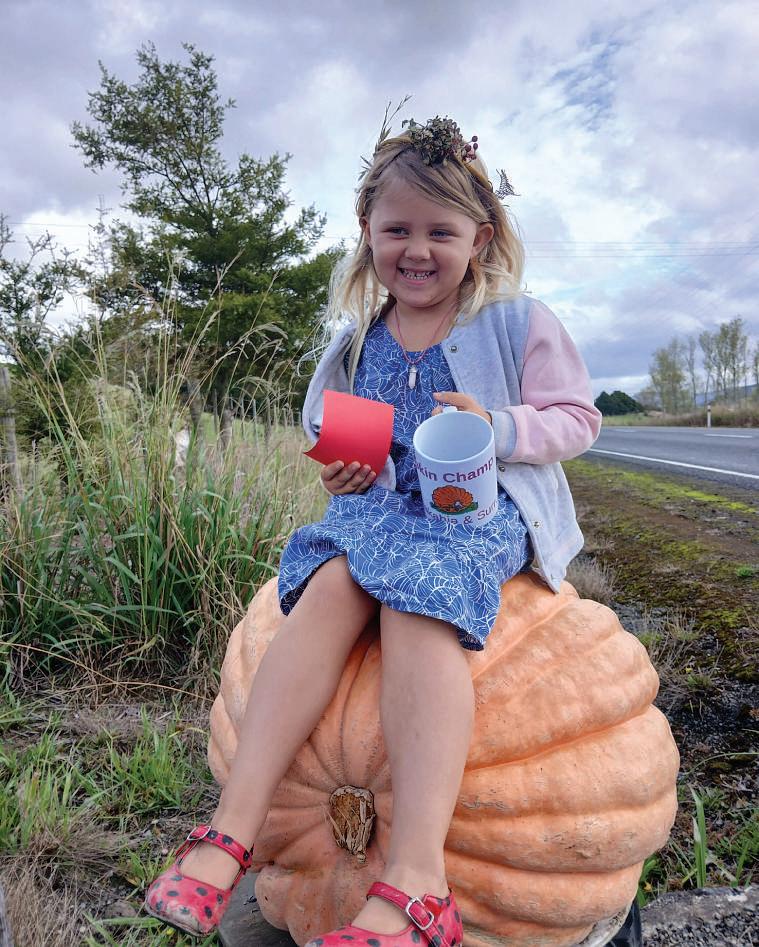

Above: The ultimate prize went to 4-year-old Hazel Blackwell with a 53.5kg pumpkin after coming second to her mum Nelly Cullen last year Hazel with her winning entry.
Left: Northland dairy farmer Susan Pryor runs the annual Celtic Harvest Festival and Giant Pumpkin Competition in the Mangakahia Valley.
STEVE MACMILLAN
For this pig farmer a shift indoors was about prioritising animal welfare
Canterbury pork and dairy farmer Rob Turney moved his pigs to an indoor system to get on top of a recurring health issue – and it worked.
Pork and dairy farmer Rob Turney describes the building process of his new hi-tech indoor pig farm on the Canterbury Plains as “like putting together a giant Meccano model”.
Designed and manufactured in Denmark, the fit-out and internal equipment of this advanced shed arrived at his Methven farm in 14 shipping
containers, ready to be assembled when he transitioned from outdoor to indoor pig farming in 2021.
The state-of-the-art facility not only supports high health standards for the pigs but also allows for precise control of heating, ventilation, and individual feeding programmes – ensuring every one of the farm’s 500 sows and growing pigs receives an optimal diet
As part of the upgrade, combi pens were installed for farrowing. These innovative pens provide more space than traditional crates while limiting the risk of piglets being accidentally crushed or trampled.
Turney’s parents emigrated to New Zealand 60 years ago, with his father initially working as a shepherd before buying land to farm sheep and beef, eventually moving into asparagus growing.
Turney didn’t initially plan to follow
94kg whopper in 2024 For Pryor, the important part of the event is helping people understand how to grow their food and how it gets to be fit for their table.
And as winter looms, she is in full planning mode for the 2026 Celtic Harvest Festival and Giant Pumpkin Competition.
Pryor says for schools and their students, growing the pumpkins and preparing them for the competition covers off a large part of their curriculum.
“Whether the school brings their pumpkins along just to enter them into the giant section or they choose to decorate or carve them or cook with them, they meet different aspects of the curriculum and now as a retired teacher, I am more than happy to teach these when and where I can.
“I love that kids are growing kai in their schools now and have the garden to table to garden cycle being lived out within their school. Pumpkins are excellent teachers. They fit into this cycle so beautifully and so boldly. Also, despite what people think, the giants are edible. Just not in the way we would eat a supermarket pumpkin.
“I want the Fest to be accessible to families from newborns to great grandmas and that is what I am seeing when I lift my head from counting votes and arranging prizes!”
Her love of gardening began from an early age. Born and raised in Waikato, she was exposed to gardening as a youngster.
“Mum and Dad were avid gardeners. We had extensive gardens on my Nana and Gokkies farm in Walton.
“We all helped in the garden, sowing peas, corn, potatoes, tomatoes and harvesting peaches, apples, pears, plums, nectarines All of which Mum and Dad preserved to last us until the next season.
“Where we live at Mangakahia, I am lucky to have a little land attached to the beautiful old villa my partner Minsu and I live in.
“He manages the farm and I work the land.”
She started mapping the land years ago, which led to her observing how the land responded to each season, with her focus moving to turning dirt into a living biome by adding organic matter.
“We have tonnes of organic matter that is more of a problem on the farm than in my opinion it should be, so I solve that problem by dumping tractor loads of it on the land. The soil is now black, loamy and alive and I can dig my hands into it.”
in his father’s footsteps. After leaving school at 16, he embarked on an extensive overseas experience across Europe, India, Thailand, and Australia. It was during this time that he realised how much he missed farming. Returning home, he completed a two-year diploma in farm management at Lincoln University.
He purchased his current farm 32 years ago, beginning with crops before introducing pigs and later expanding into dairy. Originally, the pigs were raised in a straw-based system using straw grown on-farm. However, after installing spray irrigation and converting cropping land to dairy, he began sourcing grain from neighbouring farms.
“We have very low kilometres on our grain – it comes straight from the paddock next door,” Turney says.
The move to an indoor system was driven by recurring respiratory issues in
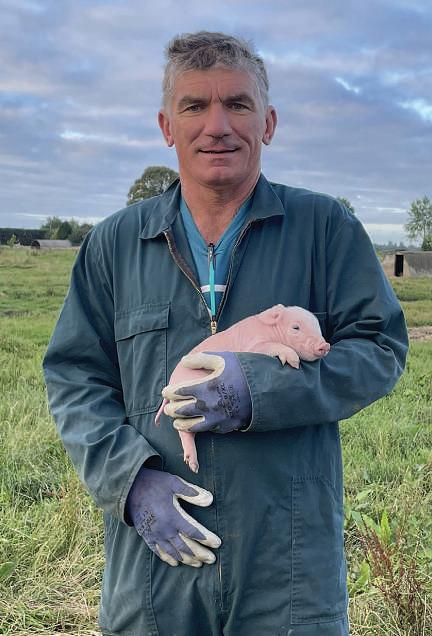
Interest in the subscription service delivering fresh yet oddly-shaped produce to homes has skyrocketed so much, it has led to nationwide deliveries.
By Sonita Chandar.
The food waste-fighting fruit and vegetable subscription service, Wonky Box, which delivers funny-looking but yummytasting produce to households is going nationwide by launching a rural delivery service from the top of the north to the bottom of the south.
Each week Wonky Box teams up with local farmers and growers to rescue produce that they cannot sell to the markets because it is either too big, too small or is not perfect in appearance.
Instead of going to waste, that produce is sold to households directly. Customers still get fresh, seasonal and delicious locally grown fruit and vegetables for their table and growers get a bit of extra income they wouldn’t normally receive.
Demand for wonky fruit and vegetables has skyrocketed over recent months and the subscription service has been over-subscribed with demand rising almost threefold between March 2024 and February 2025.
“Over the past year we’ve seen a significant rise in demand from rural Kiwis wanting the convenience of our subscription-based delivery service,” Wonky Box co-founder Katie Jackson says
“This growing appetite for produce deemed too wonky, the wrong size or colour, or surplus to supermarket requirements reflects a broader shift in consumer shopping habits.
“More Kiwis, regardless of where they live, are prioritising sustainability and food waste reduction over price and appearance.
“We’re thrilled to bring Wonky Box to rural communities across New Zealand, allowing even more New Zealanders to join us in tackling the country’s food loss crisis.”
Globally, an estimated one-third of all food produced (1.3 billion tonnes) is lost or

Second-generation Canterbury farmer Rob Turney runs a 500-sow farm raising pigs from birth to market weight He supplies 18 tonnes of pork to market each week
wasted each year between farm and fork and ends up contributing to greenhouse gas emissions.
Since launching in 2021, Wonky Box saved 4,330,862kg of fresh, edible produce from being wasted –the equivalent of an extraordinary 30.6 blue whales.

Oddly shaped fruit such as this kiwifruit which are not suitable for the markets, are rescued from being wasted by Wonky Box and sold direct to households
Wonky Box co-founders Angus Simms and Jackson were working on an orchard in Nelson when they got the idea for the business. They saw tonnes of fruit discarded as a result of damage caused by a freak hailstorm in the 2021 summer.
The fruit was edible, but because of the strict standards for export produce, it couldn’t be sold, leaving the grower out of pocket, and seeing tonnes of perfectly edible fruit go to waste.
Inspired by food-waste initiatives they had seen while living in the UK, they decided to start their own produce box business tackling food waste first in Wellington and now, nationwide.
“Growing up in Whiteman’s Valley, a rural area just outside Wellington, I remember having to travel at least 15 to 20 minutes to access fresh produce,” says Simms. “We’re thrilled to bring the convenience of Wonky Box to rural communities, like Whiteman’s Valley – making it easier for Kiwis across the country to receive locally grown produce, as well as Wonky Pantry staples.”
Karen Thian, a grower and part owner of Broadview Produce, an organic family run
his outdoor pigs “We tried everything but couldn’t get on top of it, so we built the shed.
“It was a considerable investment, but it solved the issue – and it’s great for the pigs.”
Now housing 500 sows, the farm raises pigs from birth to market weight (110115kg), supplying 18 tonnes of pork to market each week.
The introduction of combi pens was a forward-thinking move, designed to future-proof farrowing facilities. A significant amount of research went into selecting the right system.
“Our top priority was animal welfare –using the five domains model: nutrition, environment, health, behavioural interactions, and mental state,” he explains.
Working closely with specialist pig vet Bruce Welch and visiting numerous sow facilities, he ultimately chose a Danish ‘free lactation combi pen system’ that best fits his operation.
Four days before farrowing, sows are moved into the spacious 5.5m² combi pens. About two days before farrowing, a gate is drawn across the pen, restricting the sow’s movement to reduce the risk
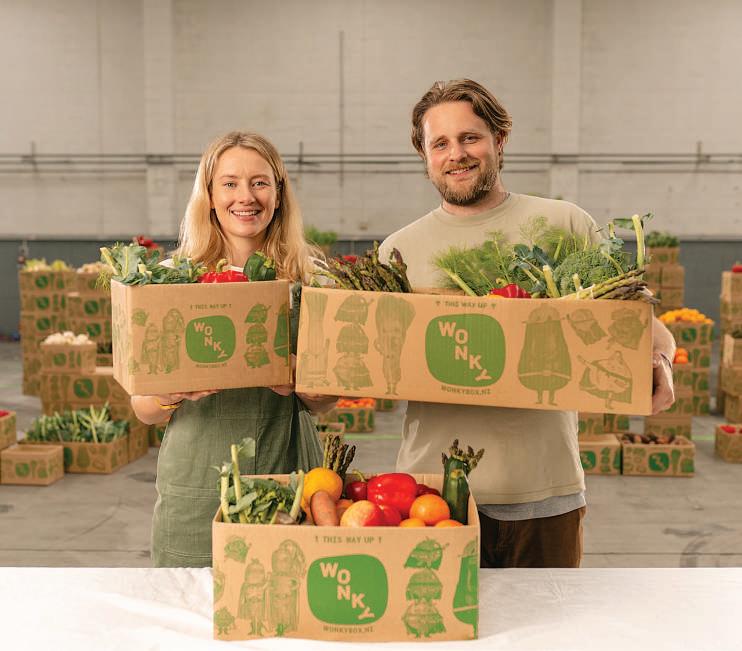

an
year but
farm located in Southbridge, Canterbury, says: “Farming is unpredictable, and no matter how experienced you are, there will always be surplus produce due to the manyvariables at play, such as the weather.
“In the past, if we had too much produce, we had no choice but to mulch perfectly good organic produce – despite
of piglets being crushed. The pens also feature a heated ‘creep area’ accessible only to piglets, with LED lighting and warm rubber flooring maintained at 25C – cosy enough to encourage piglets to stay safe until feeding time.
“The first four to five days are the riskiest. After that, we open up the gate and let the sow and piglets roam without restriction in the pen.”
Sows move into the farm’s gestation section once mated. Here they have social spaces where they can either mix with other sows or enjoy solitude. Understanding pig behaviour is crucial to keeping them content.
Sows are grouped to receive a tailored feeding plan based on their needs –whether it’s gaining, maintaining, or losing weight, as overweight sows can become lazy and less attentive mothers.
Using an ear tag system programmed to each sow groups’ dietary requirements, the feeders automatically provide the right allocation. If a sow doesn’t finish her meal, she can return later without losing out to more dominant animals.
“There are always ‘bully sows’ and more timid ones. Some like to wander, while others prefer their own space.
the time, water, and resources that went into growing and harvesting it.
“Wonky Box has changed that. We can now put that surplus to good use, getting our organic produce into more Kiwi households while still making a return. It’s been a game-changer – less waste, less stress, and a great way to support organic growers across New Zealand.”
“This system allows the timid sows to eat when they feel safe, often at night, and prevents the bullies from stealing food.”
The grower pigs are fed without restriction.
The pig farm focuses on sustainable practices such as the effluent system which captures waste efficiently, minimising the need for commercial fertiliser.
“The effluent drops through slats into a water layer beneath the floor, similar to a pull-plug system.
“It flows into pipes that lead to an effluent pond. Some of this goes to a dairy farm 20km away, but most is used on our own dairy farm to nourish pasture growth.”
This nutrient recycling reduces fertiliser costs and supports healthier grass for the cows.
“I want to do the best job I can for our pigs, our land, and our customers,” Turney says. “There’s a lot of misunderstanding about what farmers do, but behind the supermarket shelves, this is the reality. Like many farmers I know, we’re doing our best to support our communities and provide high-quality food for New Zealanders.”
Chris Tobin
Cutting-edge technology to produce coreless fruit is being developed in New Zealand and is progressing, plant molecular biologist Dr Hilary Ireland says. Ireland was joint winner with Dr Genevieve Coffey of GNS Science in the early career researcher category of the Science New Zealand Awards 2025 held recently. Ireland, a Plant & Food Research biologist, said she and her team were researching innovative and sustainable food systems, with coreless fruit one potential tool.
“We are studying the genetics of flower and fruit development to influence yield and novelty.
“A coreless apple has the flower structure altered to remove the ovary and to produce fruit without fertilisation.”
The research was being led in New Zealand.
“We are the first to show it is possible to remove the ovary and still get fruit development. Anecdotal observations would suggest that coreless apples already exist, but these are usually seedless apples – if the flower still has an ovary, it isn’t a coreless apple.
“Our research was published in 2021 and the proof-of-concept method is patented, but science moves fast and I’m working under the premise that a race is on.”
Statistics from NZ Apples and Pears Inc
DrHilaryIreland wasajoint-winner intheearly careerresearcher categoryofthe recentScienceNew ZealandAwards 2025

(NZAPI) have revealed the apple and pear industry surpassed $1 billion in annual orchard gate revenue and had a total impact of $2.5b to the New Zealand economy, Ireland said.
“Coreless technology can be applied to pears as well as apples in theory, as they have the same fruit type, pome. Seedless fruit can be game-changers for horticultural sectors, quickly becoming market standard when available, but seedless apples and pears still have an unpalatable core; coreless fruit is the equivalent game-changer for apples and pears.
“But variety and choice are important, and coreless apples could simply occupy one of many niche market spaces.”
Ireland said the research started as a small side project about 10 years ago.
“We had to test whether it was even possible to remove the ovary and still get fruit development
“Genome editing takes more work to get the desired result. Using earlier gene technologies to remove the ovary we used a single tool to disrupt up to six genes or 12 alleles, gene copies, when you consider both chromosomes

“We showed it was possible in the lab with a transgenic GMO apple modified to have no ovary which could be supplemental with plant hormones to initiate fruit development
Theappleandpear industryexceeds $1billioninannual orchardgaterevenue andadds$2.5btothe NewZealandeconomy.
“We are now working on a genome editing approach to be developed within five years. However, reaching the consumer will require additional time and effort.”
Ireland said genetic redundancy was a challenge.
“Genome editing precisely disrupts each gene copy, but sometimes you get allele changed and not the other, which usually hides the desired phenotype.
“It’s challenging, but early results suggest a minimal editing approach will be possible.”
In addition to coreless apple research, Ireland and Plant & Food Research were studying floral mechanisms influencing pollination outcomes such as genetic self-incompatibility and floral organ attributes that promote pollination.
“The central theme of our research is discovering genes controlling flower and fruit features, which can be tailored to help create sustainable food systems.”
Ireland was delighted to be joint winner of the Science New Zealand award. “It was an honour to be nominated as the Plant & Food Research nominee, and profound to be named as joint-winner with Dr Genevieve Coffey.
“New Zealand has an exceptional early career community and I have immense respect for the contributions made by all the nominees.”






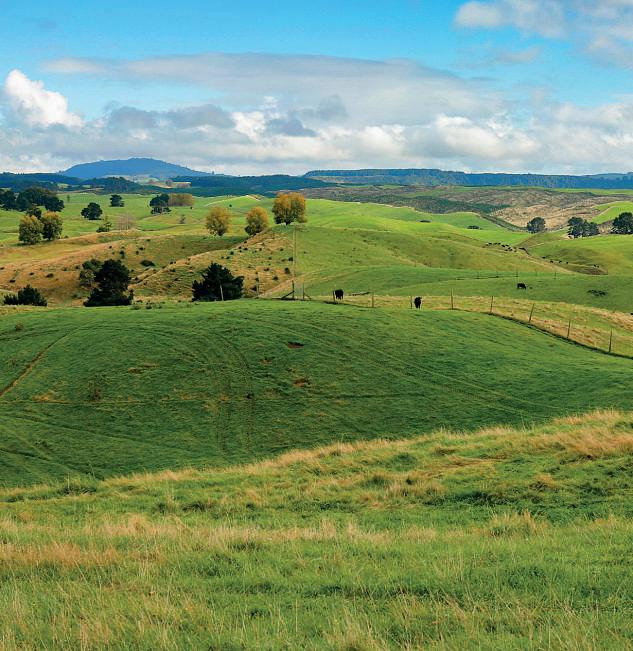


Anew study drawing on 18 years of data has shown that carrots – a staple vegetable eaten worldwide – are coming under threat from the effects of climate change, which may impact seed production and global food security.
The humble yet vibrant carrot is known for its impressive health benefits due to being rich in beta carotene, which supports eye health, strengthens skin, teeth and bones, and provides a variety of essential nutrients.
Carrots grown in New Zealand play a crucial role in the global carrot supply, producing more than half of the world’s carrot seeds.
Since carrots are grown from fresh seed each year, ensuring a steady supply of high-quality seed is essential for maintaining the global carrot crop.
However, with climate change threatening this vital seed supply, the future of carrots is looking increasingly uncertain.
Researchers from Te Kunenga ki Pūrehuroa Massey University’s School of Agriculture and Environment conducted the study, which was funded by the Seed Industry Research Centre with AsureQuality support, and led by senior research officer Craig McGill.
This research marks the first report
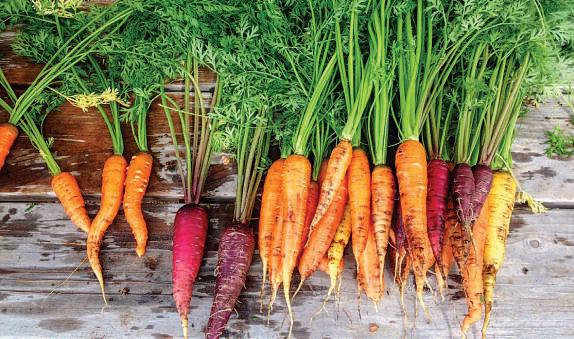
modelling the impact of climate change on carrot seed production.
The study incorporated temperature and rainfall data from 2005 to 2022 that had been modelled from 28 carrot seed-producing locations in Canterbury and Hawke’s Bay – the two primary regions where seeds come from.
Canterbury and Hawke’s Bay regions have experienced significant temperature increases since 2015
Asharp Godwin, who worked on this study as part of his PhD, explains how the temperature changes are affecting seed production: “Carrot seeds are generated from the plant’s flowers above ground,
As the effects of climate change intensify, the future of carrots is becoming more uncertain.
which can grow up to a metre tall and bloom in the summer with bright white flowers.
“This plant growth is highly sensitive to climatic conditions, meaning any changes directly impact the yield.”
Researchers modelled the impact of the atmospheric conditions and rainfall during key growth stages of carrot seed production, including the juvenile phase, vernalisation, floral development, flowering, and seed development.
Increased temperatures negatively affected carrot flowering, which in turn impacted seed development. Similarly, high rainfall during the
reproductive and flowering phases proved detrimental to carrot seed yield.
The study highlighted the vulnerability of carrot seed yield to climate change.
Even a small rise in temperature can have significant impact on seed production, as elevated temperatures disrupt the plant’s ability to produce viable seeds.
While the plants themselves may not die, the increased heat stress can reduce the availability of seeds for the production of carrots for consumption.
Godwin says this work is important in guiding the necessary policy decisions to mitigate further damage and potential food insecurity.
“It is my hope that this research will provide the data needed to develop climate-resilient carrot seed crops through biotechnological techniques, identify potential sites for carrot seed production and adapt precision agriculture practices in response to climate change.”
Godwin was supported in his PhD research by a Sri Lankan AHEAD Scholarship and AsureQuality Seed Technology Scholarship, alongside financial assistance from the School of Agriculture and Environment and the Helen E Akers Postgraduate Scholarship.
Two additional PhD candidates will join the project as it moves forward.
Chris Tobin
Farmers are very interested to learn about how they can mitigate greenhouse gas emissions on their farms, researcher Sam McNally has found
A senior researcher with Manaaki Whenua Landcare Research based at Lincoln, McNally was a finalist in the early career researcher category of the recently held Science New Zealand Awards 2025. His research focused on land management and land use, and how these influenced greenhouse gas emissions across rural landscapes.
A specific focus of his research was on how soils could contribute to reducing or mitigating greenhouse gas emissions.
“Within our programme, researchers have demonstrated and quantified some of the additional benefits that these trees provide, such as reducing heat stress for animals, which is vital to help maximise production of milk and meat,” McNally said.
“These additional benefits are of particular interest.”
With planting trees recognised as being a key tool for New Zealand to achieve net zero carbon by 2050, McNally was co-leading a large Ministry of Business, Innovation and Employment (MBIE) endeavour programme integrating trees to help achieve this goal.
The ultimate goal, he said, was to identify and develop solutions to mitigate greenhouse gas emissions from agriculture Most of the research so far had been centred around increasing soil carbon.
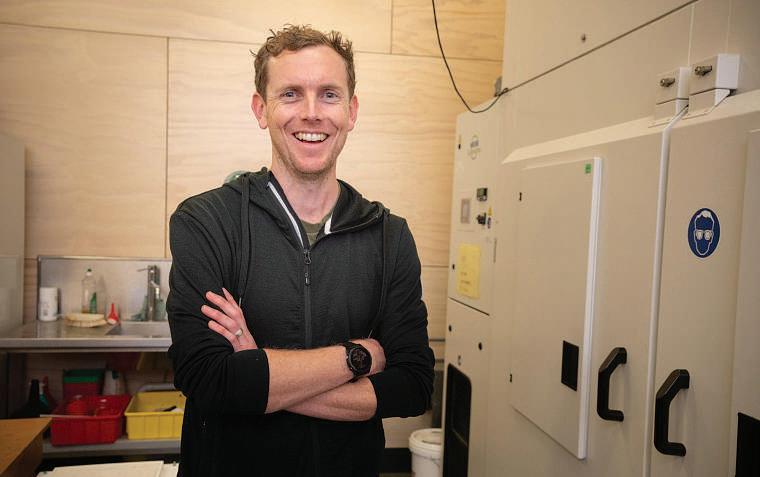
“We are halfway through a five-year multidisciplinary research programme investigating the effects on carbon storage of smaller tree plantings within grassland.
“We hypothesise that the edges of these tree plantings will increase above and below ground carbon, compared with the interior of the plantings, and that through maximising these edges we will have a greater benefit for carbon storage.
“To determine this, we are sampling sites across New Zealand where smaller groupings of trees have been integrated on-farm.
“This research programme is aimed at
providing evidence to demonstrate the carbon storage benefits of integrating trees into farming landscapes
“The specific focus of this work is on how these tree plantings influence soil carbon, but we are also looking at other benefits.”
McNally said the research had been farm-based, and forestry companies had not been approached.
“Forestry land-use, a significant contributor to national carbon storage and emissions reduction, generally aims to maximise tree crop production, whereas this work is concerned with identifying the potential carbon storage benefits of a
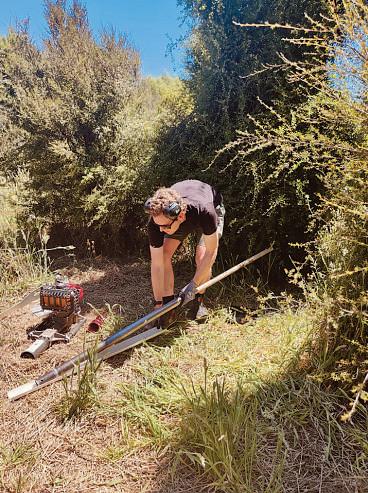
McNally at work out in the field.
more mixed approach to land-use, where possible, on existing grassland.”
He said early research had indicated that, compared with plantation forestry over 30 years, establishing mosaics of tree clusters within grasslands on 25% of the land area recommended for forestry could result in additional biomass and soil carbon stocks equivalent to offsetting 1.5 years of the country’s current gross greenhouse gas emissions, or three years of agricultural emissions.
Last year, McNally was the inaugural winner of the New Zealand Soil Society’s early career researcher award.
If you’ve never been to Fiji, or haven’t visited in a while, here are three accommodation options that should fit the bill. Sharon Stephenson reports
Things Fiji is good at: beaches, sunshine, snorkelling/diving, smiley people and an ability to throw together raw fish and coconut milk and call it a delicious meal.
This necklace of islands three and a bit hours from Aotearoa is also no slacker when it comes to accommodation, running from basic but clean hostels/backpackers lodges and mid-range fly-and-flop resorts to oodles of family-friendly options.
And then there’s the “I’ve-won-Lotto/ sold my business for mega-millions” White Lotus-style luxury resorts that are the stuff of tropical paradise dreams.
If you’re at the latter end of the spectrum, you don’t need my help because you’ve doubtless got an army of staff to book your accommodation. But if you’ve never been to Fiji, or haven’t visited in a while, here are three options that should fit the bill.
Crowne Plaza Fiji Nadi Bay Resort & Spa Fiji’s newest five-star hotel is also one of its most stylish. A short drive from Nadi International Airport (I was in the pool 90 minutes after stepping off the plane), this 324-room hotel on Wailoaloa Beach is the perfect landing pad, whether you chose to spend your whole holiday here or as a bookend to a cruise.
Once upon a time, this 5.7 hectares of waterfront land was a Pullman Hotel but, after an extensive renovation, it reopened in February 2024
The resort now packs quite the tropical punch, starting with a warm welcome of mocktails, pineapple-fragranced wet towels and shell necklaces, which ease the usual check-in tedium and get me into the holiday sprit.



The clever layout means this vast resort never feels crowded, with rooms arranged around the pool area. Two- and threebedroom apartments are a short stroll away. All follow the quiet luxury playbook of white walls, dark wooden accents and floor-to-ceiling windows that open out onto balconies or patios. Avirtual high-five to the designer who added acres of bench space in the bathroom to accommodate toilet bags and hair straighteners, a feature as rare as free hotel mini-bars.







You won’t go hungry here, with 10 places to refuel. Start the day at Harvest, which does a nice line in breakfasts (particularly if you fancy a white chocolate fountain with your morning coffee), then have lunch at Azura, where the fat juicy prawns or the okra and pumpkin burritos will see you through to dinner. Which should be at La Bottega, the ground-floor Italian restaurant where the decor is as amazing as the food (definitely order the calamari fitters).
When you’re not eating, you’ll probably be in the pool. There are several to choose from, including an adults-only space. Be sure to save some energy for Mareqeti Spa: ask for the lovely Mere, who will take care of those kinks in your shoulders. See: ihg.com
Hilton Fiji Beach Resort & Spa
When the check-in staff tell you you’re getting a beachfront room, they really mean it. I wake up, draw the curtains and there it is – a private slice of golden sand and the glittering blue kiss of the sea, so close I could almost touch it
It’s hard to package the magic of this hotel into 300 words but here goes: the rooms are cleverly “chunked” into twostorey blocks and dotted among lush gardens so that each seems private (if it’s too hot to walk, hail the bright green Bula Express open-air bus, which does continuous loops of the property)
Every room includes a private terrace or balcony, outfitted with daybeds and loungers which look super comfy (I can’t confirm because I spent most of my time in myvilla pool).
Families will love the kitchenettes and laundry facilities but what really swung it for me was the enormous bathroom, which comes with Crabtree & Evelyn toiletries and a shower big enough for four people.



You could easily stay in your suite the entire time, ordering room service and being all bougie, but you really should venture out for a cocktail at Nuku because sipping something frothy while the sun sets over the sea is a definite vibe (and gives you a front-row seat to the nightly torch lighting ceremony).



Getting there: Fiji Airways flies direct to Nadi twice daily from Auckland, three times a week from Wellington and four times a week from Christchurch. See: fijiairways.com
The writer was hosted by the resorts listed.
of the sea just hours before. Breakfast is at the adults-only restaurant Koro, where the adjacent pool is so enticing I ignore everything my mother told me about not swimming after eating and chase my eggs bene with a quick dip.
See: hilton.com
Sheraton Fjii Golf & Beach Resort
In 1987, the Sheraton was the first resort to open on the 344ha man-made Denarau Island. I stayed here in the early noughties and although my memory isn’t what it used to be, I remember it being a bit tired even back then.


Then make your way to Maravu, a panAsian restaurant where Australian chef Darren Ferrall will whip up snapper in tamarind chilli sauce and stir-fried mud crab that’s so fresh it surely crawled out















fully integrated five-star resort complex, guests have access to sister properties Sheraton Denarau Villas and the Westin.
The rooms, including the two- and three-bedroom villas, lean into a contemporary coastal style, with lots of chocolate and cream accents. The white-tiled bathroom is stocked with Pure Fiji toiletries and there’s another hurrah for the ample counter space.
Not that you’ll be spending much time indoors: the resort has a choice of pools, including a swim-up bar, kids’ club and the popular Side by Side activity programme for the whole family.
While some restaurants like to brag about their farm-to-table ethos, the Sheraton really lives that with a 2ha organic farm and orchard tucked into the resort’s 18-hole golf course. We tour the farm (guests can do yoga among the lettuce every morning) before enjoying the produce at Tatavu Grill & Bar, one of three in-house eateries


Hurrah for the owners who waved a massive renovation wand over the entire complex during the pandemic, reopening it in 2022. It’s still box-fresh with an understated elegant feel, from the expansive open-air lobby to the 300 rooms (and one enormous presidential suite, which, rumour has it, has hosted a president or two).


We snuggle our toes in the sand and order the wood-fired seared tuna and fruity cocktails. If you can, time yourvisit for a Saturday night, when you’ll be entertained by superb musical collective Love 33. Then do as we did and finish the evening at Cellar & Barrel, the newly opened speakeasy bar, where you can choose from 120 whiskies See: marriott.com



You’re never far from a pool at the Crowne Plaza Fiji Nadi Bay Resort & Spa.

You also get three for one: as Fiji’s only

































































































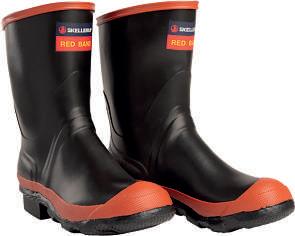
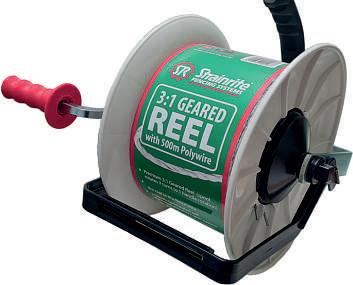



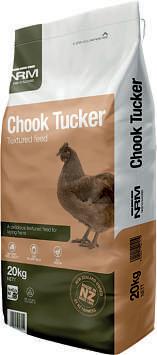



















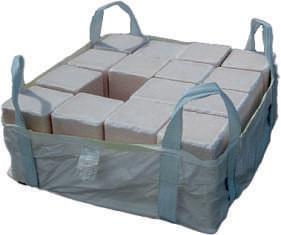









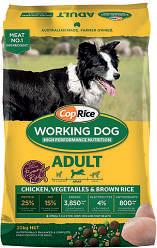
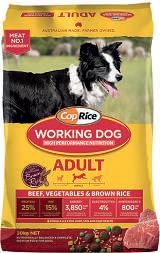


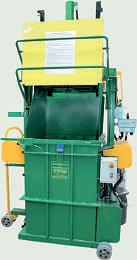

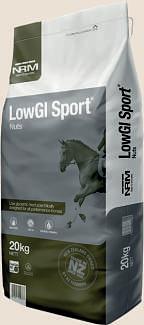



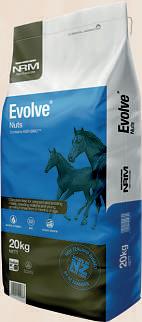
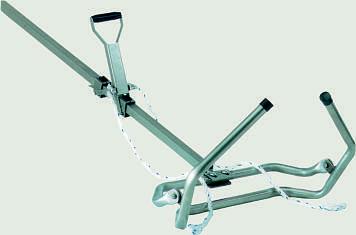





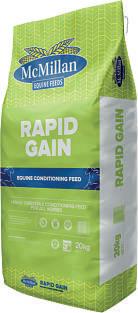




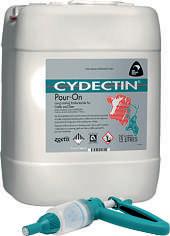
















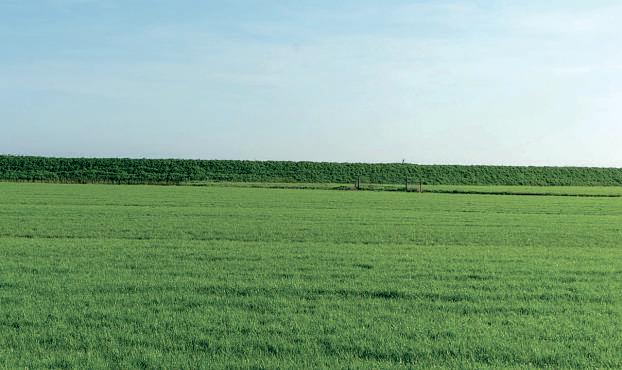













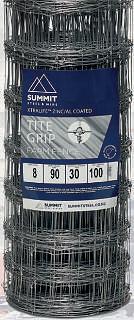

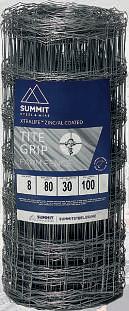



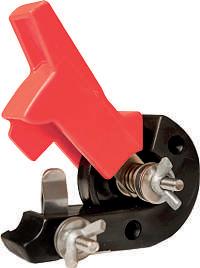


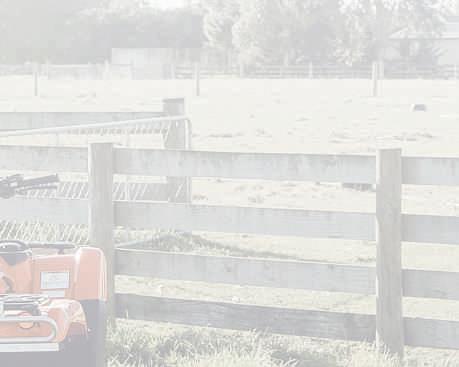

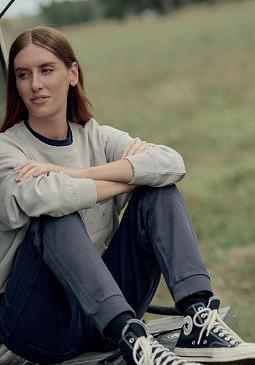











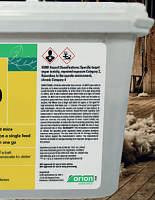







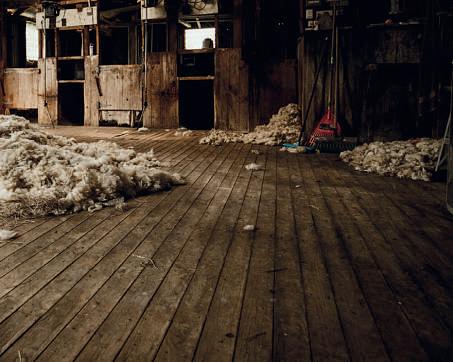









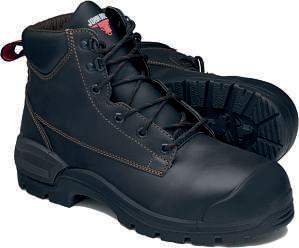





Scott Downs Director of sales and marketing for PF Olsen
New Zealand’s indigenous forests are globally unique, ecologically rich, and deeply woven into the nation’s identity. But they are also under threat – from invasive pests, habitat degradation, and climate change.
While efforts to protect and restore these ecosystems have long relied on public funding and volunteer labour, a new opportunity is emerging – biodiversity credits.
By quantifying and monetising the ecological gains achieved through indigenous forest management –particularly pest control – New Zealand could attract significant overseas investment into conservation, while delivering local jobs, stronger ecosystems, and aligned outcomes for Māori landowners.
Biodiversity credits are a relatively new but rapidly growing concept in the sustainability world. Just as carbon credits represent a tonne of carbon sequestered or avoided, biodiversity credits represent measurable improvements in ecosystem health – such as the return of indigenous birds, increased species diversity, or successful regeneration of native understory.
These credits can be purchased by businesses, governments, or impact investors looking to offset their biodiversity impacts or support nature-positive outcomes.

Few countries are better placed to lead in this space than New Zealand. Our indigenous forests host a remarkable array of endemic species found nowhere else on Earth This high ecological distinctiveness makes biodiversity gains here particularly valuable on the international stage –especially to companies seeking credible, high-integrity biodiversity offsets. One of New Zealand’s most effective tools

for improving biodiversity is pest control. Introduced predators like possums, rats, and stoats wreak havoc on native birds and forest ecosystems. Intensive, sustained pest management has been shown to dramatically improve biodiversity, and these outcomes are now increasingly measurable through modern monitoring techniques such as acoustic sensors, remote cameras, and satellite imagery.
If we can capture these gains in a scientifically credible and verifiable biodiversity crediting system, we can unlock a new stream of investment into our forests. International corporates, particularly in sectors like mining, infrastructure, and agriculture, are under pressure to mitigate their biodiversity impacts and demonstrate environmental stewardship New Zealand could offer them a reliable, transparent, and politically stable place to invest in biodiversity restoration.
This opportunity is particularly exciting for Māori landowners. Many iwi and hapū seek to restore native bush as part of broader goals around environmental stewardship and cultural connection to whenua. Biodiversity credits could provide a long-term revenue stream that supports pest control, jobs, and ecosystem restoration – all aligned with the principles of kaitiakitanga.
Of course, challenges remain. New Zealand would need a robust national framework to define biodiversity baselines, verify ecological gains, and ensure the permanence of outcomes. But the building blocks are already here: strong ecological science, a reputation for environmental credibility, and a growing appetite for nature-based solutions.
In a world increasingly focused on sustainability, New Zealand has an opportunity not just to protect its natural heritage, but to turn conservation into a viable investment proposition. With biodiversity credits, we can invite the world to partner with us – not in exploiting our landscapes, but in healing them.
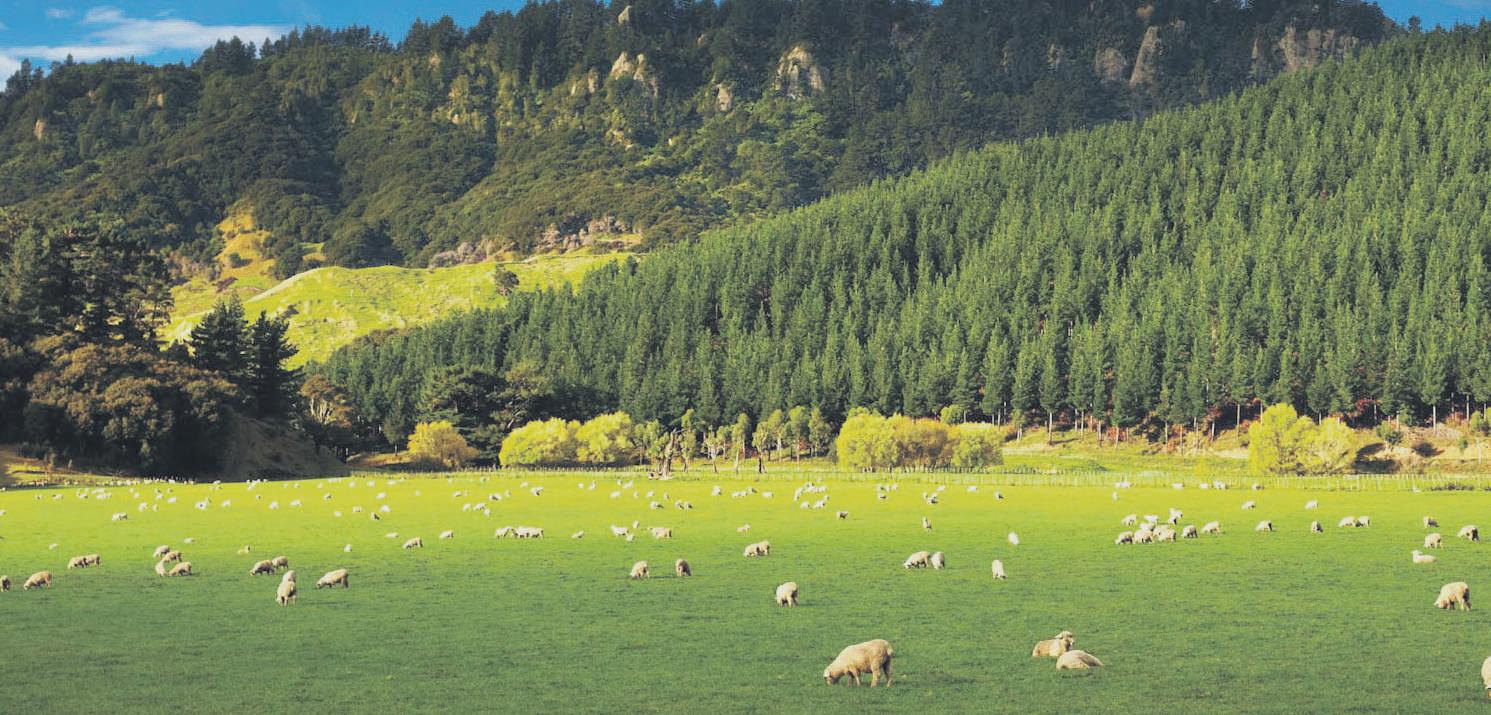

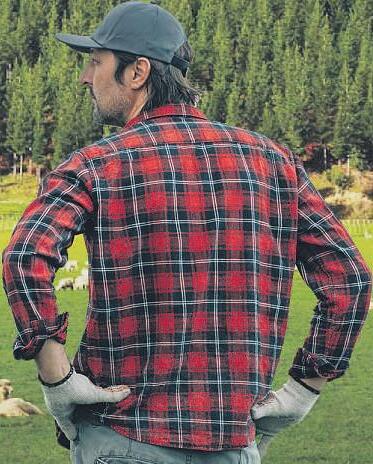


Global appetite is continuing to recover, leading to an uptick in exports.
New Zealand’s red meat sector recorded another strong month in February, with exports reaching $1.1 billion – a 25% increase compared to February 2024
The United States was the largest export market, increasing by 32% to $339 million, while China rose 5% to $278m.
The European Union (EU) also experienced significant growth, with both beef and sheepmeat exports rising.
Sirma Karapeeva, chief executive of the Meat Industry Association (MIA ), said the latest figures reflect a continued recovery in global demand
“While export volumes saw only small changes, the value of exports rose significantly compared to last year.
“The New Zealand red meat sector remains agile, responding swiftly to market fluctuations to maximise value.”
Exports to the EU saw particularly strong growth, with sheepmeat volumes rising 42% to 8579 tonnes and the value increasing 84% to $152m.
This was the highest volume of exports to the EU in February since 2019 and the first time that monthly sheepmeat exports to the EU had exceeded $150m since 2009.
It reflects a general increase in the global demand for sheepmeat and tight in-market inventories in the EU.
There was also a further recovery in


sheepmeat exports to China, while beef exports to both Canada and the United States increased.
For the first time, beef exports to the US exceeded $250m in a single month.
Other key markets also performed strongly.
Exports to the Netherlands increased by 45% to $57m, while the United Kingdom saw a 42% rise to $54m.
Japan also experienced growth, with exports rising by 16% to $53m.
Sheepmeat Sheepmeat exports in February increased by 4% in volume to 41,792 tonnes, while the
value climbed 35% to $473m.
Volumes to China rose by 9% to 19,733 tonnes, with the value increasing by 4% to $133m.
The volume of exports to the UK declined slightly by 2%, but the value grew by 37% to $40m.
The United States was the only major market where sheepmeat exports decreased, falling 36% in volume to 2646 tonnes and 5% in value to $62m.
Beef
Beef export volumes were down 5% to 44,786 tonnes, but the value rose 23% to $486m, primarily driven by strong demand in North America.
Exports to the United States increased by 15% in volume to 21,308 tonnes and 58% in value to $251m.
Canada also saw a significant rise, with volumes up 30% to 2140 tonnes and the value jumping 77% to $24m.
While beef exports to China declined due to continued competition from South American suppliers, particularly Brazil, there was an increase to other North Asian markets.
The value beef exports to Japan rose by 24% to $33m, while in Korea it climbed 49% to $15m.
Fifth quarter
The value of fifth quarter (co-products) exports also grew, rising 7% to $169m for the month.
Edible offals increased by 30% to $40m, while casings and tripe rose 31% to $36m. Prepared and preserved meat products also saw growth, increasing by 19% to $22m. China remained the largest market for these products at $54m, followed by the US at $26m and Australia at $18m.
The New Zealand venison industry has invested in building a premium retail presence in North America through the Sustainable Food and Fibre Futures (SFF Futures) – North America Retail Accelerator (NARA) programme That is until Donald Trump imposed tariffs, which has raised some questions.
The Deer Industry New Zealand (DINZ), along with the five leading exporters, are aligning around shared messaging, packaging innovations, and market insights to lift retail performance.
“Some are asking if that momentum may be tested by the new tariff regime just announced by the US administration,” DINZ chief executive Rhys Griffiths says.
“An additional 10% tariff on chilled and frozen venison creates a new cost layer in the value chain, but it also reinforces just how important the NARA programme is to help build and maintain a presence in the US, while telling the New Zealand venison story.”
And just who will pay the tariff? Griffiths says that, at this stage, that is an “unknown”.
“Retailers will likely resist any shelf price increases that reduce sales velocity. Importers and distributors may attempt to pass the cost upstream or negotiate tighter terms. Exporters will push back to protect margin
“Ultimately, unless value can be defended, some of that cost may make its way back to New Zealand producers, so we
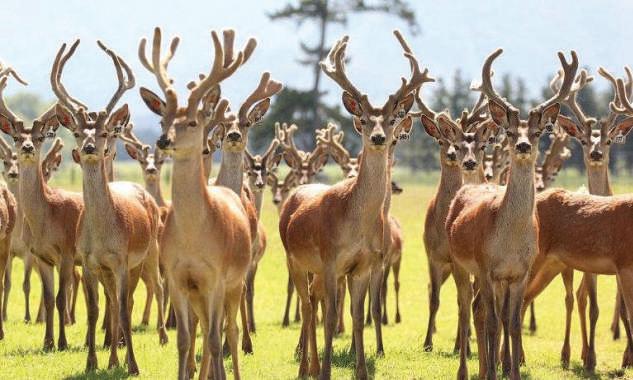
must do all we can to protect that value proposition.”
Griffiths says margins in the premium protein category are hotly contested and venison competes with a range of alternatives – grass-fed beef, bison, elk, and even plant-based proteins.
“The reality is that all imported proteins will incur more cost to come to the market, and it’s unlikely that the US will be able to domestically produce its meat protein demand (at least in the short term), so prices to the consumer are also likely to be impacted. However, a visible retail price increase could influence purchasing decisions, particularly for new or occasional consumers unfamiliar with venison’s value story.”
The tariffs pose a threat to shelf presence, as retailers operate on hard
metrics: turnover, margin contribution, and space productivity.
What a 10% tariff means for NZ venison in American retail channels is still unknown.
cost-effective packaging and processing formats, and tell a stronger New Zealand venison story at the shelf.
These insights provide the commercial intelligence required to defend venison’s place in the chilled and frozen meat aisle, even in the face of added cost.
Looking ahead, retail success will depend on reiterating the premium attributes of New Zealand venison – pastureraised, lean, high in iron, and ethically farmed. Shelf communication and brand storytelling must justify the price point.

“If venison sales decline due to higher prices, even temporarily, products may be delisted or moved out of prime shelf space. Smaller retail chains may be more flexible, but national banners will quickly rationalise underperforming stock keeping units.”
DeerIndustry NewZealandchief executiveRhys Griffithssaysretail successintheUS willdependon reiteratingthe premiumattributes ofNewZealand venison.
Griffiths says this risk reinforces the importance of the NARA programme, which is helping the industry to build market knowledge such as price points, formats, and consumer preferences, trial
Exporters and their in-market partners may need to optimise SKU selection, packaging configurations, and freight models to claw back margin and hold retail pricing steady
Retail partners will need confidence to retain venison in their offer. Co-branded promotions, nutritional comparisons, and consumer education will be vital.
Griffiths says the jury is still out, questions remain and time will tell how Kiwi venison producers will fare.
“This new tariff headwind is real – but navigable.
“Who bears the cost remains unclear. From an economic standpoint, it’s uncertain how the market will react. Our target consumers may absorb the increase and continue purchasing, or broader inflationary pressures from the US tariff policy could dampen overall spending.
“With smart, co-ordinated action and a continued focus on retail, New Zealand venison can remain a premium presence on the American retail shelf.”
Kate Acland says the nation has the natural advantage of isolation, but we are not immune to outbreaks and biosecurity is critical to keep out things such as Foot and
As farmers, we take pride in the fact that we produce some of the world’s best meat, dairy, and wool – right here from our clean pastures, rolling hills, and well-cared-for stock.
We follow world market trends, price, weather and anything else that could impact our businesses closely – but our reputation, and our entire way of life, rests on something a lot more fragile than most people realise: biosecurity.
It’s a word that gets thrown around a lot by government agencies and industry groups but here on the ground, it means something simple – keeping pests and diseases off our farms and out of our country.
We have the natural advantage of isolation, but as the Mycoplasma bovis outbreak showed us, we are not immune, and the recovery can be long and painful for farmers, the sector and the country.
Right now, with foot-and-mouth disease (FMD) on the rise overseas, there’s never been a more critical time for all of us –farmers, workers, suppliers and government – to get on the same page
The FMD Operational Agreement that’s been negotiated over the past 12 months under the Government Industry Agreement (GIA) is a big step forward in that direction. And while it might not sound as urgent as a forecast drought or falling payout, trust me – it’s just as important.
The Operational Agreement sets out how

we’ll respond if FMD ever turns up here in New Zealand. It defines who does what, who pays what, and how we make decisions in the heat of a crisis. It also put sensible caps on liability for certain sectors.
An FMD incursion would be a crisis. If it got loose in our livestock sector, we could see exports grind to a halt, culling on a massive scale, and years of hard work undone in a matter of days.
It’s a disease that spreads fast and hits hard. And we wouldn’t just be dealing with the virus itself – we’d be facing a tidal wave of economic fallout that would wash through rural towns and the entire national economy. Farming isn’t just what we do –it’s who we are, and we can’t afford to be caught off-guard.
That’s why I’m backing this operational agreement, and why I believe it’s something every farmer should be paying attention to. It’s not about bureaucracy – it’s about being prepared. It’s about ensuring we as farmers have a voice and a seat at the decisionmaking table if a response is needed
But it’s also about what we do at home. Biosecurity isn’t just something that happens at airports or ports. It starts at our farm-gates.
If an outbreak of any disease occurs, can you look your neighbour in the eye and know you’ve done everything you could to avoid this happening? We’re not powerless, having clean gear, isolating new animals and keeping NAIT records up to date are all things we can and should be doing.




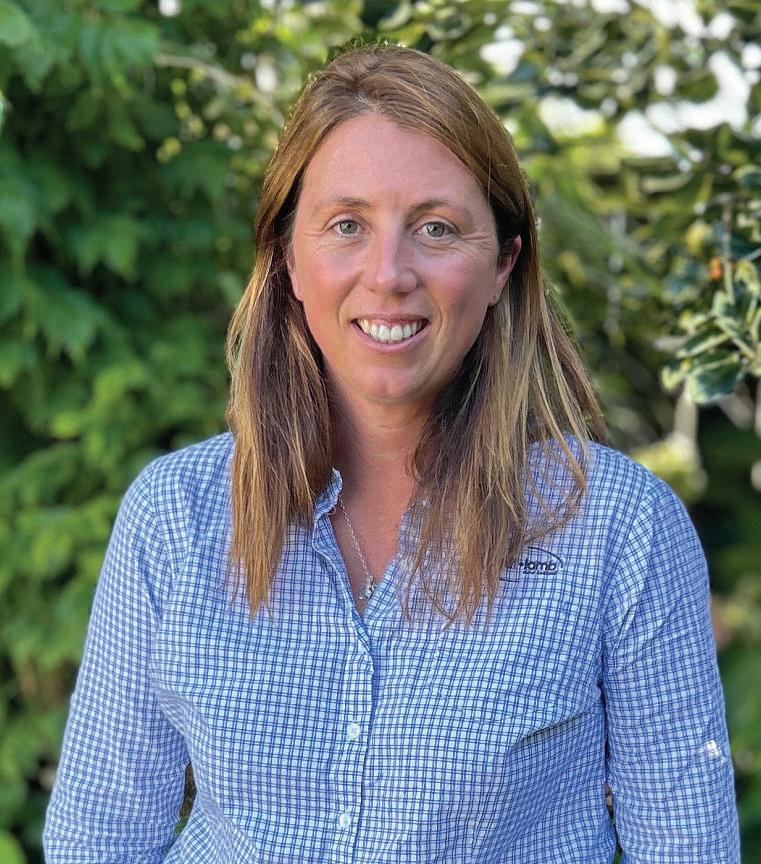
And we’re making good progress in key areas, as illustrated by Molesworth Station officially achieving TB-free status, marking a major milestone in the fight against bovine tuberculosis (TB). We also currently have no active confirmed farms that have tested positive for M. bovis.
That’s testament to the hard work of farmers up and down the country.
Time and labour are always short, but protecting our animals, our land and our rural economy has to come first.
With farm-gate returns finally heading in the right direction, this could all be un-done in an instant with a major biosecurity outbreak
This operational agreement won’t stop FMD at the border – but it’ll help us fight it if it ever gets through.
I’d encourage all farmers to take the time to understand what it means and talk to your levy or industry bodies. Because if we’re all doing our part, we’re not just protecting our own piece of land – we’re safeguarding New Zealand’s farming future. We’re known around the world for doing things right. Let’s make sure that includes how we prepare for the worst.
Kate Acland is the chairperson of Beef + Lamb New Zealand and a mid-Canterbury sheep beef and dairy farmer.

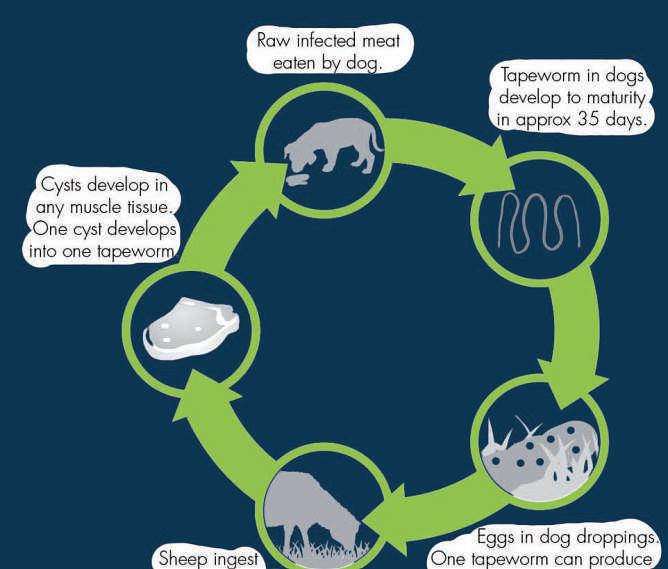
A Northland farmer employing migrant workers on his dairy farm for 13 years, says they are a key part to the success of the business.
By Steve Macmillan.
In an increasingly challenging rural sector, one Northland man is innovating to ensure his workforce is exactly what he needs.
And Jim Chambers believes he has struck gold with his move to employing Korean and Sri Lankan staff.
It was 13 years ago that Chambers began searching for a way to attract reliable, dedicated and loyal staff, a journey that introduced him to talent from abroad.
After 30 years dairy farming – much of that time single-handed – he is stoked to have a stable workforce of immigrants and Kiwis working together across two neighbouring dairy farms in the Mangakahia Valley, north-west of Whangārei.
He is also pleased to have three generations of Chambers on the land with the addition of his son Sean to the team in recent times.
Like many other employers, he has had his challenges in attracting reliable New Zealanders prepared to work hard
With much at stake around animal welfare and the financials of running a complex and challenging business model, he felt there had to be other options in attracting the right talent with a strong loyalty and work ethic.
“I have always thought if you treat people right, they will naturally do right by you – but that is not always the case, unfortunately,” Chambers says.
“The team I have around me now is really delivering the goods and nothing is a problem.”
His first foreign worker to join the family operation was Korean Minsu Choi back in 2013 and Chambers says he has been integral to the growth of the business, as he has worked his way to a senior operations cover role which he shares with his partner Susan Pryor
In the years since, Sri Lankans Milton Mallawarachchi, now a farm manager and AB technician, and dairy assistant Prasad Kumaraga have come into the business Chambers has been dairy farming for three decades and has been in partnership with his father Russell for many years. Even at 79, Russell is driven to keep developing properties to improve infrastructure and lift productivity
Like his son, he is always looking for the next opportunity to add to their portfolio. The first property Russell bought was a run-down dairy unit at Matakohe in 1977, where he milked 180 cows. From there, he moved to another unit at Parua Bay and gradually expanded by purchasing neighbouring properties, growing it to 380 hectares
Along the way, he had a separate dairy unit down the road before selling up and moving to an 80ha irrigated farm at Paparoa in 2003. He added an artificial insemination run and agri-contracting to the mix for additional income before selling it few years later and taking a break from farming for four years.
After another stint back at Parua Bay, the initial 175ha Mangakahia dairy unit –Emmerdale 1 – was bought in 2016 with a 50ha lease block added to the mix. That is now managed by Choi and Pryor, with Mallawarachchi and Kumaraga combining to make a very effective team milking 350 cows in a 30-aside herringbone.

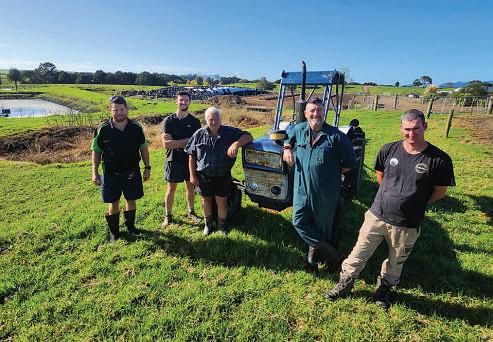
A neighbouring dairy unit totalling 220ha is leased and that is the home of Emmerdale 2, with farm manager Paul Webb combining with dairy assistants Kyle Krissansen and Sean Chambers.
The trio is milking 400 cows (100 winter cows and 300 spring calvers) in a 32-bale rotary, with production climbing back to 120,000kg MS after taking a hit from Cyclone Gabrielle.
“Cyclone Gabrielle cost us hundreds of thousands as we lost 120ha of our prime river flat grazing or 18 months.”
Additional grazing of 125ha borders the properties, thanks to blocks bought by Russell Chambers in recent years.
That extra pasture has been invaluable to the operation while recovering from the impact of Gabrielle, says Chambers. It also allows them to carry 130 R1 replacement heifers and 130 R2 replacements.
Just as importantly has been having a cohesive and supportive team on hand to tackle the ongoing challenges.
“We have purposely stuck to once-a-day milking for both dairy units to ensure our staff have quality downtime to have interests outside the farm and to re-charge, so they are focused when the work is on.
“I know what it was like milking twice

a day on my own year in, year out, and I wish I had done it different back then. Yes, your production can be 15% less but the inputs are less, you are not being so hard on the land and the cows and their offspring are under less stress, so they perform better and maintain better health.
“All of our staff get the importance of that and they have all bought into the model. They each have different skills and having the breathing space from not operating a relentless milking regime gives them space to shine and develop their skills because they all come from different backgrounds.
“For example, Sean is a software engineer who still contracts to Collie in Holland. Milton oversaw a dairy unit in Sri Lanka milking 2500 cows and he had 40 staff under him. He also has a tea plantation.
“Prasad had a dream to come to New Zealand and dairy farm and he is going places. Paul and Kyle have strong ties to the land, plenty of experience and are
always keen to muck in and get things done, and Susan – as a professor and a teacher – has a very keen eye for detail and doing things right.”
Chamber’s says having his dad’s experience on-farm is gold for the team because they soak up his knowledge.
Looking back on his 50-odd years in dairying, his dad says it has been challenging but satisfying and he is looking forward to the Mangakahia properties reaching their potential.
“You have to look after the land and your animals right, otherwise you are history. It’s pretty bloody simple and farmers don’t need authorities telling us that because we know what is right and our farms are our livelihoods so, of course, we are going to do the right thing by the land,” Russell Chambers says.
“Developing land, pushing ahead and improving things are what I have always enjoyed and I believe there are still opportunities for youngsters to get into farming if they are prepared to work hard and not set their sights too high initially.”
Madeleine Powers
Farming’s not seen as “sexy”, a Canterbury farmer says, but get recruitment right and you’ll see results.
It might be a employer’s job market right now, but it’s the reverse in farming.
Sometimes, though, something small sweetens the deal – like being able to have a dog, or a boss who remembers your children’s names.
Kim Grayling, of Singletree Dairies in Canterbury, said farming was not seen as “sexy” or “attractive”
Grayling and her husband, Will, along with Canterbury farmer Jeremy Duckmanton, spoke at the DairyNZ People Expo event in Hamilton in early April. In a rare moment of competition, they’d recently both courted the same prospective worker, with the Graylings winning.
“If you can get the people right, the overall performance of your farm will improve,” said Kim.
Duckmanton and the Graylings both manage large intensive farms with teams of farm workers.
Duckmanton, who is a 50:50 sharemilker of 1900 cows over two farms in Mid-Canterbury, said technology was slowly replacing the repetitive tasks on farms and improving productivity, but the uptake of technology depended on the people working on farms.
Finding and retaining workers was challenging, both farmers said Duckmanton added that while technology might create losses when it broke down, the same could be said of a worker who didn’t show up to work because they slept in.
Will didn’t need convincing to become a farmer or show up for work, having always wanted to be one from a young age. But with the farming workforce changing and 13% of dairy farms under-staffed according to a recent DairyNZ survey, Kim said people needed to change their perspective and start treating workers “like people”.



The couple met while studying at Lincoln University, and went on to start managing people on farms by age 23.
They’re now managing a 590-hectare dairy farm with 2500 cows and between 12 and 14 fulltime staff, as well as owning another farm in equity.
For Kim, becoming a people manager on a farm was a more natural progression, having studied HR at university, but Will said they had both changed their perspective on the best way to manage workers.
With about a quarter of the industry’s workers coming from overseas, a large portion of the demand for labour on farms is being supported by foreigners moving to the country for work.
“You have to understand what’s important to them.”
In one case, this was having a dog,


which wasn’t previously allowed on the farm. “If they want a dog, let them have a dog.”
More than half of the workers on their farm were migrant workers, and the cultural differences and power imbalances come with their own challenges.
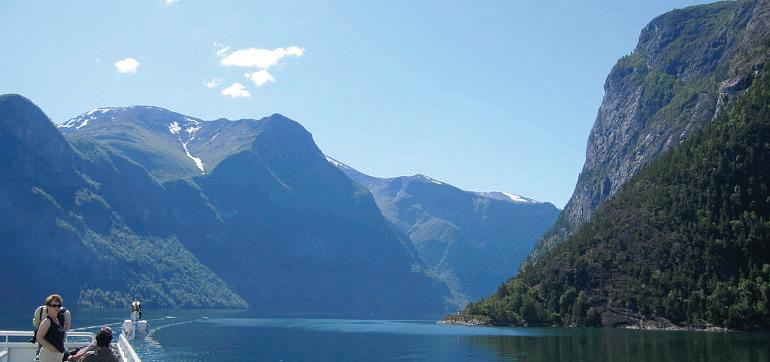



give honest feedback, for fear of losing their jobs. But the couple’s staff retention is good, with many having worked on the farm for more than five years.
“The longer you can hold on to people, generally, the better,” said Kim.
Getting the “right” people on the farm was crucial, and they would turn away applicants who weren’t quite right, rather than risk disturbing a team that had “a good thing going”.
But finding the right people could prove challenging too.
She recommended being clear and honest about the job, and then making the offer competitive enough to be attractive.
“We have to make sure our offers are good enough, and then we have to nurture them,” she said
Rather than saving a list of criticisms for an employee’s annual review, Kim and Will will address issues as they arise, and focus the review on whether the workers are feeling fulfilled in their jobs.
The couple’s passion for the industry and their own experience working their way up led them to start the Grassroots Dairy Management Graduate Programme.
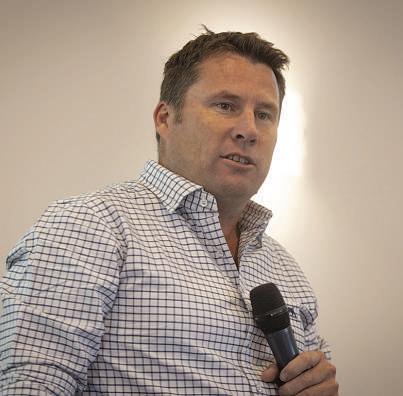
“There’s a real power imbalance,” said Will of their workers.
“One of them still thinks I’m going to put them on a boat and send them home.”
He said it could impact their ability to
not-for-profit scheme ves recent graduates a pathway to learn and enter the industry through farm placements and training.
It’s been a success, and Kim said they have recently hired one of the programme alumni. When recruiting, she id they looked for “soft skills” because “those are harder to train in than hard skills”.
“Everything seems to come down to communication.”
For Will, this has included learning to make small talk in the milking shed with workers at 4am, and remembering the names of their workers’ children.



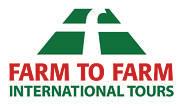




A rural Auckland company is focusing its efforts on growing capsicums for the Japanese market, where they are known as ‘bell peppers’.
Peter Schreuder, head grower and site manager for Gourmet Waiuku, says the main focus of its business is growing capsicums for the Japanese market.
“Of the tag one fruit, we have about 70% of our crop exported to Japan in the peak season.”
Japan has been a key market for many years, says Schreuder, with a small percentage of the company’s produce exported to Australia, the Pacific Islands, and other small countries as well.
“All the compliance and those requirements are becoming harder and harder, more time-consuming to get sorted.
“The biggest challenge by far is the energy issue. We find the most efficient way of heating is with gas. The byproduct, CO2, goes directly into the glasshouse, which improves shelf life and production.
“To optimise CO2 and heat, we have a large buffer tank where heat is stored when it is produced during the day so CO2 can be used in the greenhouse.
“Coming out of the chimney, there are very little byproducts left. In terms of other options, we haven’t really found one that’s suitable in the long term.”
Energy prices soared last winter amid record-low hydro lake levels, a lack of wind and sun, and what the government described as an inadequate supply of natural gas.
“It’s an incredibly challenging industry to be in. But in the way we’re managing our site, we’re happy with what we’re doing.

“That’s the thing about Gourmet – we always focus on quality. It’s a priority. That’s the quality of the work being done, the site aspects – keeping it as efficient and clean as possible. That will result in the highest-quality production. Once you’ve got that quality in place, production will naturally follow.”
High sunlight hours this summer have
been beneficial for the capsicum crop.
“It’s been a pretty good season for us We had a bit of an energy crisis in the winter, which limited our heating capabilities of the crops. They suffered a bit during that time, but since spring and summer, we’ve really thrived, and the crop is looking fantastic.”
In terms of production, Gourmet
Waiuku had been quite far behind last season, he says.
“We’ve now managed to catch up and are on target to beat last year’s production levels.”
“Company-wide, we grow about 60% red capsicum, 30% yellow, and 5% each of green and orange.”
During the off season, about 20 staff work in the glasshouse, with 10 in the packhouse. This jumps to between 25 to 30 in the glasshouse and 15 to 20 in the packhouse.
“Our peak season is December to end of February, in March we’re preparing for crop change and doing our final picks.”
Gourmet Waiuku was established in 2013 The company’s glasshouse and warehouse are equipped with the latest energy efficient technology to help employees work efficiently and ensure the produce is grown and graded to a high quality.
No day is the same working at Gourmet Waiuku, Schreuder says.
“It’s the diversity you’ve got every day
“You can jump out with the picking crew, or twisting and pruning, do a bit of office work, forecasting, production, planning work schedules, liaising with sales teams, sorting fertiliser, and of course overall growing.”
Schreuder has been full-time with Gourmet Waiuku since 2014, having previously worked for Gourmet Mokai and done a three-month stint of work experience at Enza Zaden in North Holland.
He was one of seven contestants in the Pukekohe Young Grower competition last year, and has signed up to compete again this year in the annual competition run by regional organisers and Horticulture New Zealand. Schreuder says it is a great opportunity to challenge yourself
“It may seem daunting at first but the organisers and module runners were incredible in making you feel as comfortable as possible.”
Young growers can enter this year’s competitions at younggrower.co.nz.
Opinion
Horticulture New Zealand chief executive
Kate Scott says the horticulture sector has immense potential but greater collaboration is needed if it is to achieve its aspirations.
Irecently returned from an eyeopening week in Singapore as part of a FoodHQ-led delegation looking at land use change and diversity in food systems.
We had a great group of around 25 people – from farmers to industry leaders – all there to see what lessons we could bring home to New Zealand Singapore is a remarkable place, and not just because of the traffic and noise. For context, the entire country is roughly the size of Lake Taupō, but with a population that is slightly more than that of New Zealand – around
6 million people. However, the challenge facing Singapore is massive – how to feed their people with almost no land of their own to grow food or raise animals.
What is apparent to me is the sense of purpose that underpins Singapore’s approach to food security.
The Singaporean Government has developed a plan billed as “30 by 30”. This is a bold goal to produce 30% of their nutritional needs locally by 2030. At the heart of this ambitious strategy is collaboration between government, business, and research that – importantly – is combined with real clarity. There is a recognition that everyone needs to pull in the same direction.
That sense of unity is something I have been reflecting on since landing back in New Zealand.
In New Zealand, we have plenty of land and natural resources. In stark contrast, Singapore has been forced to innovate – embracing technology, partnerships, and a whole of country approach to address its food security challenges.
So how do we create an “NZ Inc.” approach for our primary sector? What will it take to shift our mindset from
going it alone, and at times talking past each other on various issues, to growing stronger together to tackle our own issues?
Is this idealistic? Maybe. But if we could better harness our collective energy, skills, and resources, just imagine the impact we could have in New Zealand and overseas.
Another thing that stood out for me in Singapore was agility. As growers, we’re facing a volatile and fast-changing global environment, and that pace has intensified following the shift in US trade policy.
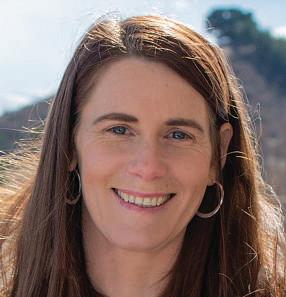
In Singapore, they have long recognised the importance of being able to plan, pivot and adapt, which is what has led to their rapid development as a nation over the last 60 years.
What does that mean exactly?
waiting around for that right policy, asking the Government for something, or perfect conditions – it’s about moving fast, collaborating, and making things happen together.
we don’t embrace that same agility in New Zealand, there’s a real risk we’ll be left behind. We all know our horticulture sector has immense potential. But to realise our ambitions, we need to work more collaboratively, invest in innovation and maintain own clear, shared purpose.
Kate Scott
Ultimately, Singapore’s food strategy isn’t just about lofty goals and visions –it’s looking to be nimble and responsive to emerging risks and opportunities.
For me, that means not always
Singapore has shown that size doesn’t limit ambition – and neither should it for us.
The time is right for every New Zealand food producer and group to think bigger, act smarter, back each other and work as one.
If we do so, we can ensure New Zealand’s primary sector will go from strength to strength, delivering value not just for farmers, growers and our economy, but also our environment and our regional communities.

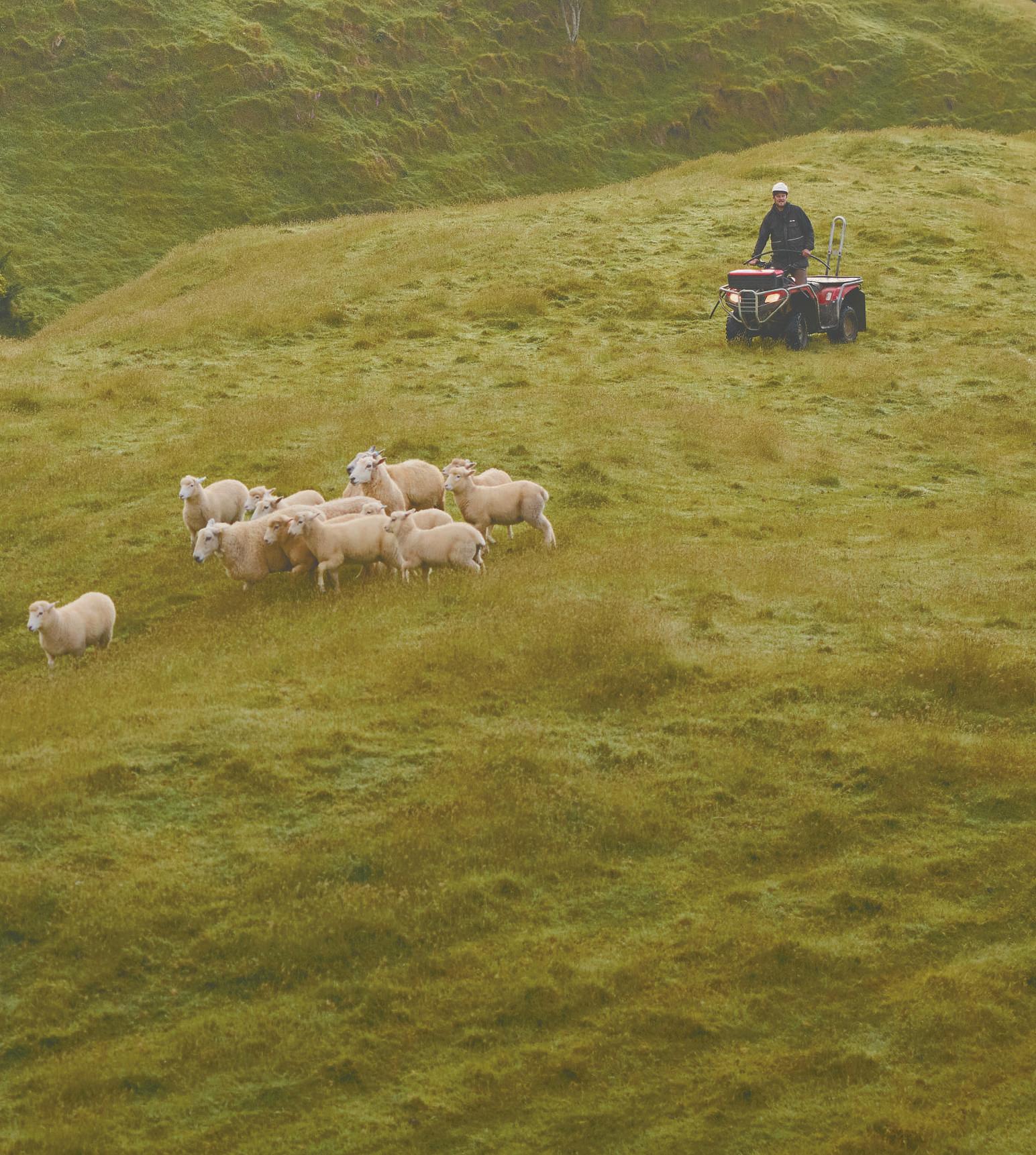

























A strategy to showcase the latest and greatest developments and innovations in the tech sector, as well as the people who work in it, is putting New Zealand in the spotlight. By Sonita Chandar.
New Zealand’s biggest tech and innovation festival – an event that is good for the world and will transform businesses, educators and our community in the digital year ahead – kicks off later this month.
Techweek is New Zealand’s premier annual festival of tech innovators, companies, products and users It’s the week that the country sees tomorrow’s tech first.
Techweek25 is a nationwide series of events, showcasing and celebrating local innovation and provides a platform where people can meet, share ideas and create connections to enhance the future world.
It also aims to promote our technology success and opportunities to the Kiwi public and the world, and advance the growth of tech in New Zealand
Created and run by NZTech and the Hi-Tech Trust in 2012 to coincide with the Hi-Tech awards, the event was launched to build enthusiasm around new technologies being developed here. Since then, it has grown from several events to a high of 562 events in 2019
The nationwide programme is developed and curated locally by Techweek’s regional partners.
With local programmes and events created by local people, Techweek is globally unique in presenting a grassroots, authentic national festival that accelerates the growth of New Zealand’s impactful tech sector.
Each year, Kiwi tech entrepreneurs and innovators create incredible new technology that will enhance lives
Techweek is where you can experience that tech first – so you are equipped to make tomorrow better for your business, educators or community.
“This year, we’re diving deep into five content pillars that showcase how technology can help keep people connected, the economy active, and how New Zealand can become a tech hub for thought leadership,” a spokesperson for Techweek said
These pillars are:
■ Growing exports
■ Improving sustainability
■ Creating good tech
■ Developing careers and skills
■ Lifting productivity
Growing exports
Export numbers tell an inspiring story. In 2023, Kiwi tech companies exported a remarkable $10.7 billion worth of goods and services, making technology our third-largest export sector.
“That is a testament to the innovation, creativity and determination of New Zealanders who are building solutions that the world wants and needs,” the spokesperson said.
“What is even more exciting is the momentum. Despite global challenges, our tech exports grew by 8.7% between 2022 and 2023. Today, technology makes up 11% of all New Zealand exports, showing just how vital this sector has become to our economy’s future
“This success spans across different types of technology and represents thousands of Kiwi jobs, ground-breaking innovations and solutions that are making a real difference worldwide.”
Techweek25 will look ahead to what’s next and how more Kiwi tech companies can take their solutions global, what opportunities exist for businesses just starting their export journey, and how we ensure our tech exports continue to grow sustainably and create value for both New Zealand and our international partners.
Improving sustainability
Kiwi innovation is proving to be a powerful force in our journey toward a more sustainable future and in particular climate change And the world is taking notice.
Globally, CleanTech investment is growing five times faster than average, with early-stage venture funding reaching US$16.1b in 2019 By 2030, the climate technology market is projected to reach $100b.
NZTech has been working alongside government and industry to create a
“
Our tech sector is stepping up ... to create solutions that work for our unique context.
Graeme Muller
framework for a Climate Technology Roadmap. “The role of technology in sustainability is vast and cannot be overstated,” NZTech chief executive, Graeme Muller said.
“The urgency is real. New Zealand could face billions in costs before 2030 if we don’t reduce emissions faster. But this challenge is also driving innovation Our tech sector is stepping up, working alongside government and industry partners to create solutions that work for our unique context.”
Techweek25 will showcase how Kiwi innovators are turning these challenges into opportunities.
Attendees will hear from companies developing everything from smart-energy management systems to revolutionary waste-reduction technologies. More importantly, they will discover how these innovations are creating real impact in our communities
Creating good tech
‘Creating Good Tech’ is technology that makes tomorrow better for people and our planet. Kiwi innovators are tackling some of the world’s biggest challenges. And they’re doing it with a unique perspective, guided by the Māori value of kaitiakitanga – the principle of guardianship for people, place and planet.
Developing careers and skills
New Zealand’s tech sector is booming
– contributing 8% to our GDP and generating nearly $11b in export revenue.
But behind these impressive numbers lies a challenge that affects us all: the growing digital skills gap.
In 2023, 96% of tech employers reported facing skills shortage challenges While our tech sector is growing nine times faster than the rest of the economy, we’re struggling to keep pace with the talent needed to fuel this growth.
The good news? We’re seeing promising shifts in how people can enter tech careers. Companies like AWS and Google offer certification programmes to fast-track people into tech careers.
“However, we’re facing what experts call a ‘leaky pipeline’. While job opportunities in artificial intelligence (AI), cloud computing and cybersecurity continue to grow, we’re seeing declining participation in tech subjects at secondary school,” the event’s spokesperson said.
Lifting productivity
The question Techweek will explore is “how can technology help New Zealand businesses work smarter, not just harder?”
With our economy facing global pressures and local challenges, the answer increasingly lies in smart adoption of digital tools – and AI is leading the way
Recent research from the AI Forum New Zealand shows AI is already boosting productivity, with 67% of surveyed organisations now using these technologies And the results speak for themselves: 96% of businesses using AI report improved worker efficiency, while half are seeing positive impacts on their bottom line.
“AI is helping our workforce do more with less. The good news? This isn’t about replacing people – it’s about empowering them. Only 8% of organisations report AI replacing roles, showing that these technologies are primarily being used to augment human capabilities, rather than replace them.
“It’s like giving every worker a superpowered toolkit that helps them perform at their best.”
The chief executive of the New Zealand Veterinary Association Te Pae Kīrehe, Kevin Bryant, says veterinarians work long hours and deserve to be recognised for the vital part they play in agriculture.
It’s time to acknowledge our rural vets, vet nurses and vet techs, who are often out alongside farmers before dawn and after dark, in rain and sun, supporting the country’s vital primary sector.
In New Zealand, there’s fewer than 800 vets working with farm animals, alongside dedicated nurses and technicians, providing essential health care for more than 30 million animals.
While experienced vets are thin on the ground, the commitment and dedication of all those working hard for New Zealand farmers is beyond question.
We’ll be celebrating a number of significant accomplishments, exemplary leadership and tireless commitment, at the New Zealand Veterinary Association Te Pae Kīrehe (NZVA) Annual Awards These are a highlight of the annual NZVA conference in June.
Many dairy farmers will know the President’s Award winner – Mark Bryan, of Winton. Bryan has had an extensive career dedicated to advancing veterinary science and animal welfare. He’s had a lasting positive impact on the veterinary profession, and on his local community and the farmers he works with.
Another award winner well-respected
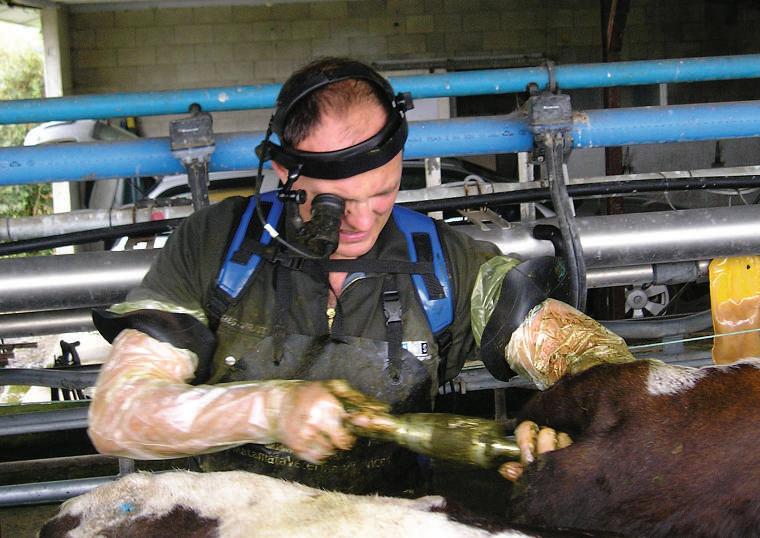
by dairy farmers is Stephen Hopkinson, of Taranaki, who will receive the Outstanding Service Award for 2025. Hopkinson served on the Dairy Cattle Veterinarians (DCV) for nine years from 2012, including being the inaugural chairperson of the Member Advisory Group, and also served on the NZVA board.
This year, we have two winners of the Veterinary Impact Award – Ginny Dodunski, from central North Island, who’s the Wormwise programme manager, and Neil Chesterton, from Taranaki, who has had a long and illustrious career in the dairy industry, including a focus on cow lameness and behaviour.
Congratulations to a number of outstanding businesses – Anexa Veterinary Services, which has developed an
educational kit to help attract young people into the veterinary profession; Vet Services Hawke’s Bay (VSHB), which has earned a reputation as a supportive and visionary employer; and Lewis Griffiths’VetSalus for environmental sustainability.
“
Vets and their teams can be proud of the positive difference they’re making to our valuable primary industries.
Kevin Bryant
I also want to acknowledge the thousands of other hard-working and committed people in our profession, because it’s not an easy job, to put it mildly.
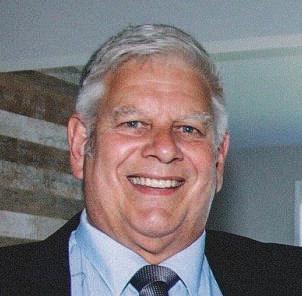
And recognising the younger generation, congratulations to Young Veterinarians award winner Jordi Hoult, who inspires young veterinarians and professionals to explore diverse career pathways.
These award winners are all inspiring and it’s great to recognise them.
The hours are long, the conditions be challenging, and the stress vels are high.
Vets and their teams can be proud of the positive difference they’re making to our valuable primary industries. They’re providing preventative care that contributes to better animal welfare and higher production.
Veterinary care is part of successful farming system. Strong relationships between vets and farmers, built up over many years, carry them through the hardest days and the best days on the farm. Vets and their teams understand the emotional as well as the economic realities of farming, and do their best to help. They are a valuable and vital part of New Zealand’s primary sector, and they all deserve our thanks and applause.

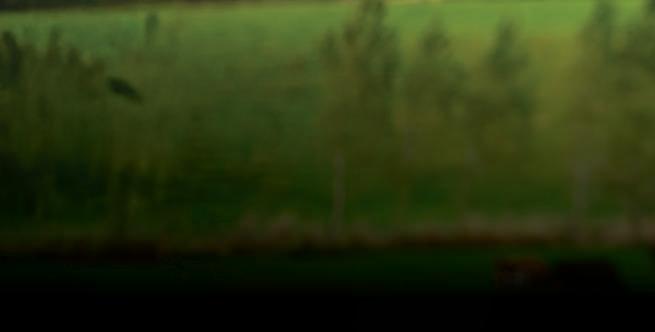





This is your Co-op, youown it. So there is onlyone definition of long-term success —yours.

It’s your milk. Your future. Your Co-op.




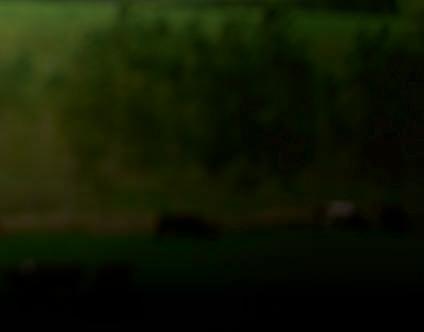
Labour
Ashlea Maley
Like many other employers across New Zealand, the agricultural sector continues to face a significant hurdle: a shortage of experienced farm workers. Rural and regional employers have long been competing for the same limited pool of staff.
The labour shortage not only impacts productivity, but also drives up hiring costs, placing additional pressure on existing farm teams. Add to the challenge the increase to the minimum wage
The recent rise in wage rates apply to all employees working in New Zealand aged 16 and over. On April 1, the adult minimum wage increased by 1.5%.
■ This takes the minimum wage to $23.50 an hour.
■ The starting-out and training minimum wage increased to $18.80 per hour, which is 80% of the adult minimum wage.
As with every year when there’s an increase to the minimum wage, ensure you know the details. Unless both parties agree to a higher rate in the employment agreement, the minimum wage applies to all hours worked.
The Recognised Seasonal Employer (RSE) scheme
To enable farmers to find experienced workers, many utilise the Recognised Seasonal Employer (RSE) scheme. This allows workers from specific countries to
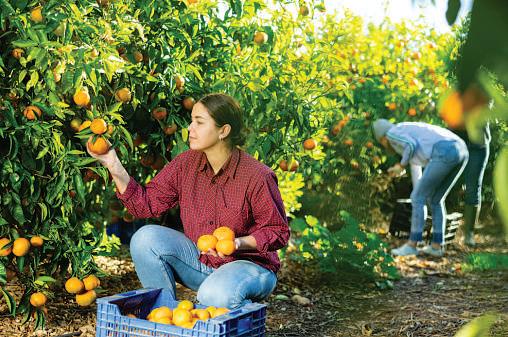
come to New Zealand to plant, maintain, harvest and pack crops.
To be eligible for this scheme, you must meet all the employment standards, including paying employees hired under the RSE scheme no less than:
■ The adult minimum wage if they are in their first and second season of work;
■ The adult minimum wage plus 10% if they are in their third (or subsequent) season
Under the Wages Protection Act 1983, you must keep accurate time, wage and leave records for all your team members. There are also special requirements if you have employees on work visas.
Changes to work visas and median wage
Coming into effect on March 10, employers hiring employees under the Accredited Employer Work Visa (AEWV) and seasonal



and visa conditions Even if the rate is more than the current minimum wage.
The removal of the median wage requirement is seen by some as a potential way to attract a larger pool of international workers to fill these critical roles, where finding experienced domestic staff remains a major obstacle.

Specific Purpose Work Visa (SPWV) are no longer required to pay the median wage. There will be no set pay thresholds for these employees, except the New Zealand minimum wage of $23.50 per hour.
Sector Agreements, which offer residence pathways, will continue with no changes to the wage rate required to gain residence.
The removal of sector agreements means roles previously covered by sector agreements for below median wage jobs are no longer subject to restrictions, such as caps or limitations on visa duration. They will instead be treated the same as other jobs of the same skill level.
If you hired an employee in terms of an AEWV before March 10, they should be paid in line with their employment agreement



you’re offering accommodation
Due to your farm’s location, you might choose to offer some agricultural workers accommodation and meals, or just accommodation as part of their package.
Under the Minimum Wage Act 1983, ‘board’ is considered as providing accommodation and meals, while ‘lodging’ is accommodation only.
If you have not agreed on the cost of accommodation with your employees, the maximum you can deduct for board is 15% of their wages when calculated at the relevant minimum wage rate, and 5% for lodging.
If your employees have agreed to having the cost of accommodation or other benefits deducted from their wages, this amount is included when you calculate their minimum wage.
Given the intricacies of wage calculations and the potential for costly underpayments, it’s recommended to seek expert advice to ensure accuracy and compliance. For instance, the experienced team at Peninsula offers 24/7 support to help you navigate through any wage regulations





An accident in which a tractor tumbled down a hillside in wet conditions, injuring the driver and writing-off the vehicle, is the subject of the latest Safety Alert issued by Safer Farms.
The alert encourages farmers to have conversations with their workers about taking a “stop, think and then do – but only if it is safe to do so” approach
Safety Alerts document real-life incidents, distilling key lessons from farmers into concise, one-page handouts for managers to use in safety discussions with their teams.
In this case, a tractor operator had placed a bale feeder at the edge of an incline in a paddock.
While the vehicle was parked there, conditions changed, the paddock became wetter and cattle pugged the surface which became slippery.
When the driver moved the empty bale feeder, the tractor lost traction. As he tried to regain control, it slid sideways downhill, before tumbling and coming to rest at the bottom
The operator was taken to hospital and treated for broken ribs. He was able to get help quickly because he had his mobile phone and he avoided more severe injury because he was wearing a seatbelt.
The Safety Alert can be used to encourage discussions with workers about what hazardous conditions there may be on-farm, how they approach changing conditions and the importance of driving to conditions That includes the strong message that, even though someone may have driven or ridden many times in a paddock, it is important to reassess conditions every
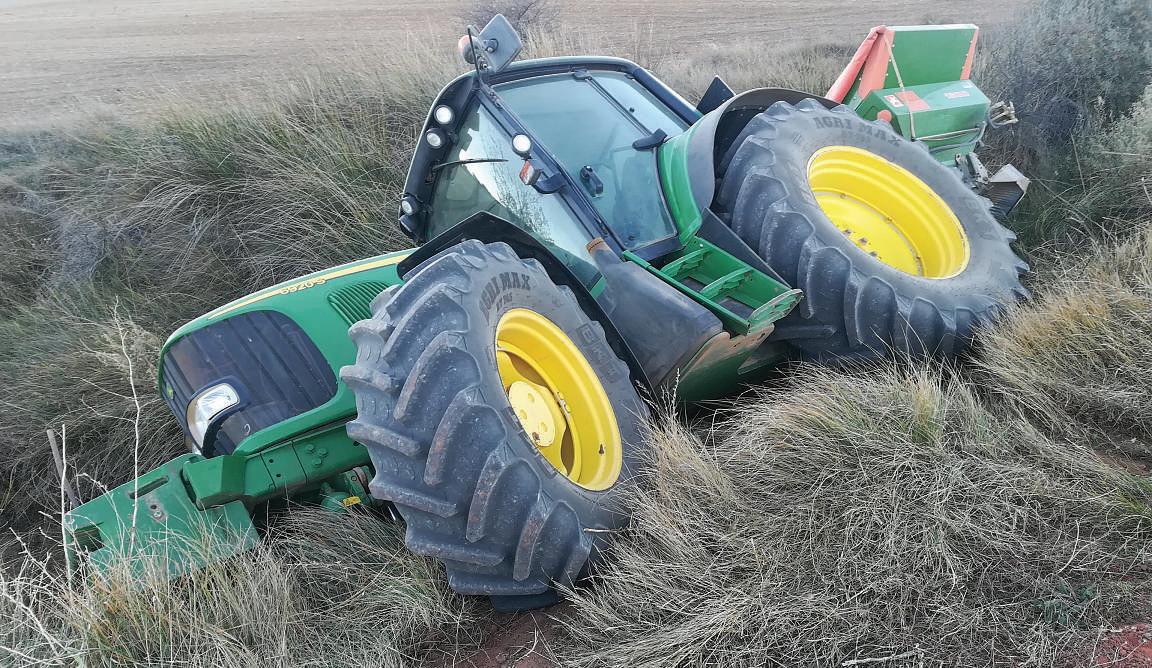
time you are in that area and be prepared to change the way you do things. The best course of action in this case would have been to leave the bale feeder in the paddock until conditions were safe to move it.
The alert can be used as a reminder to always carry your radio, phone or personal locator beacon on your person and always wear a seatbelt. Nearly half of vehicle-related deaths on farms could have been avoided by seatbelt use.










or operating on
To view the Safety Alerts, please visit www.farmwithoutharm.org.nz/safetyalerts. Alerts can be printed out for use in training and discussions and there is an option to be emailed when new Safety Alerts are added.
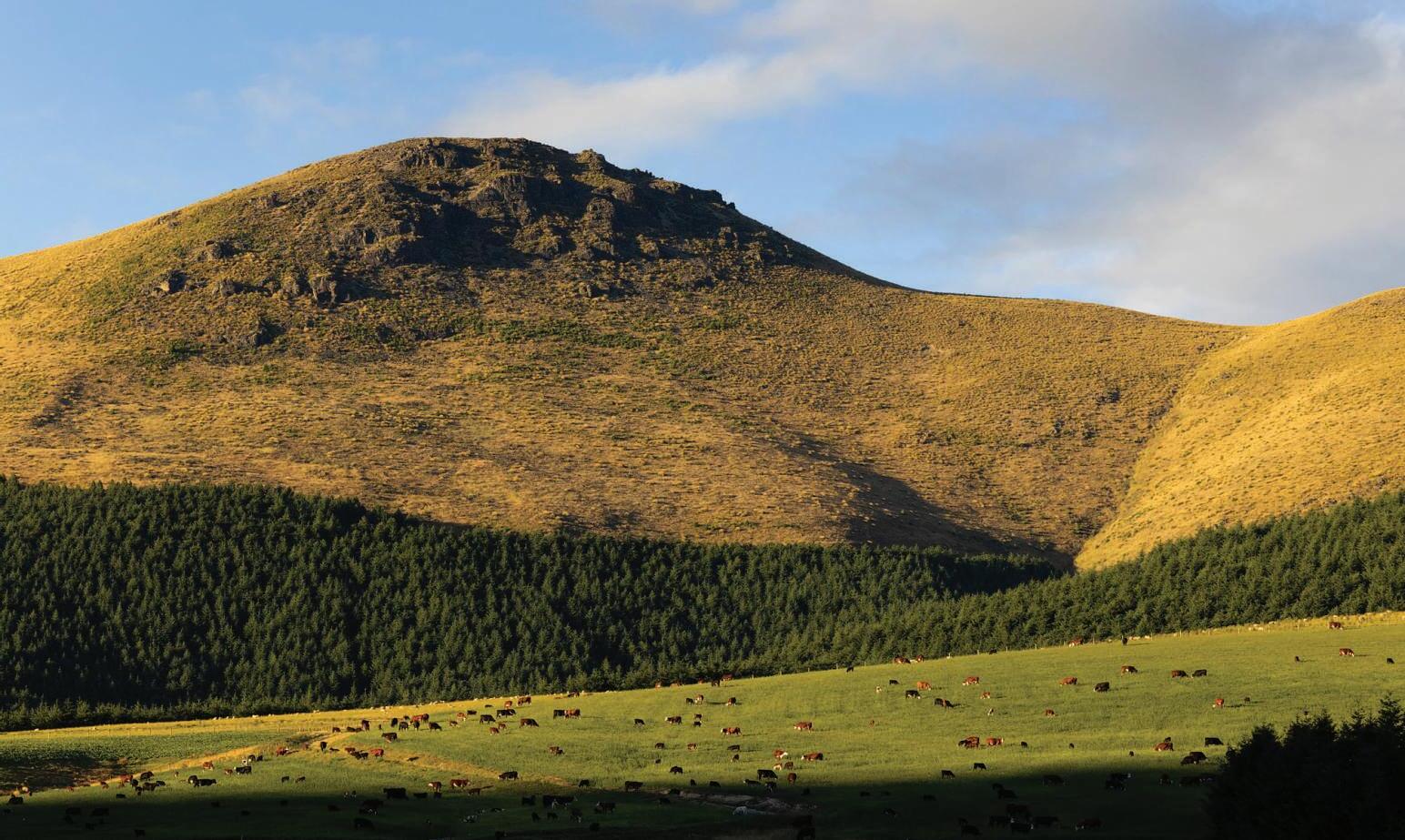








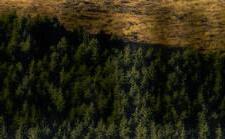



New Zealand’s bull sale season is a pivotal time for farmers looking to enhance the genetic quality of their herds.
This annual event grows in importance each year as advancements in breeding and changes in market demands redefine livestock farming practices In 2025 sellers and buyers alike face an intriguing landscape filled with prospects and challenges.
Opportunities for sellers in 2025
For sellers, 2025 promises a fertile market
The increased awareness of genetic quality underscores the importance of investing in elite bulls. Breeding bulls are perceived as strategic investments enhancing herd productivity and resilience.
Notable trends boosting seller optimism include:
■ Efficiency Demands: Producers seek bulls that improve feed efficiency while supporting robust growth rates. Sellers offering bulls with strong performance data are well-positioned to meet this demand.
■ Climate-Adapted Genetics: New Zealand’s varied climate calls for bulls adept at surviving diverse conditions. Bulls suited to forage-based systems and resilient against weather extremes will be increasingly favored.
■ Sustainability Interest: As sustainability becomes a priority, farms look for genetics that enhance carbon efficiency. Sellers focusing on reducing environmental impacts stand to benefit from this shift.
Buyer Guidance
Confident Bull Selection
The bull sale season offers great potential but requires buyers to be meticulous in

their investments, influencing herd productivity and profitability. Here are six tips for navigating the 2025 bull selection process:
■ Define Goals: Establish what you aim to improve in your herd, be it calving ease or genetic diversity, to guide your selection based on relevant traits.
■ Rely on Data: Analyse the Estimated Breeding Values (EBVs) or genetic reports to understand a bull's genetic impact on fertility, growth, and carcass quality.
■ Prioritise Soundness: Genetics must be supported by physical structure. Evaluate

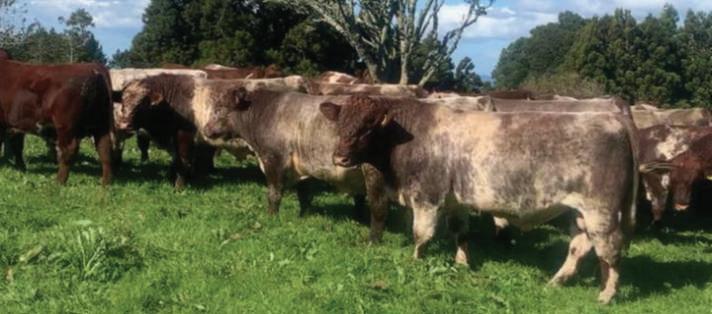
leg soundness, frame size, and feet quality for robust performance.
■ Mind Temperament: Choose bulls with manageable temperaments to promote farm safety and harmonious herd dynamics.
■ Value Longevity: Opt for bulls with strong health and longevity records to ensure longer service and value.
■ Seek Expert Help: Consult advisers or sale agents for guidance. Many sellers also offer post-sale support to integrate bulls successfully.

The Overarching Framework
The bull sale season in 2025 will thrive on cooperation, transparency, and a united commitment to advancing New Zealand’s livestock sector. Sellers should provide buyers with the necessary tools for decision-making, while buyers should focus on long-term herd success. The integration of modern genetics with farming wisdom offers a path to growth and prosperity, fostering excellence in livestock production across New Zealand.

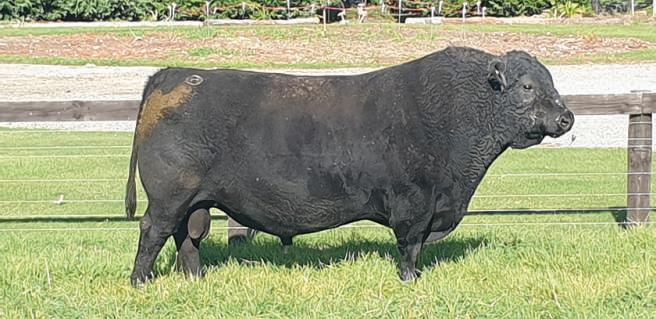
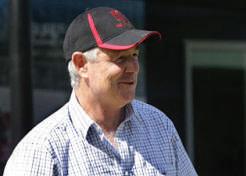

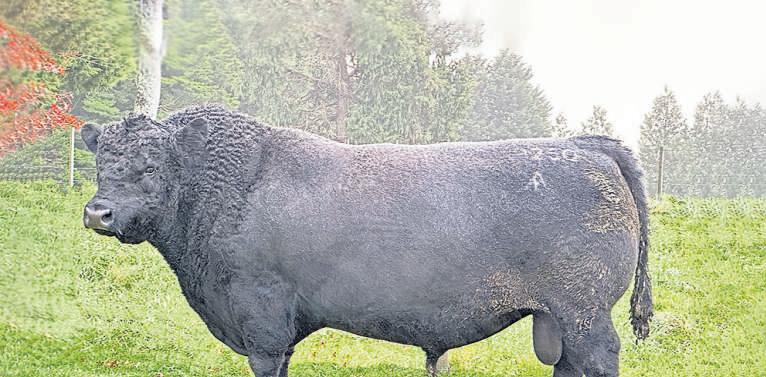




Friday 30th May2025 at 11am
16thOn-Farm Bull sale -35Bulls on offer
CONSISTENCY-SURVIVABILITY -FERTILITY -GROWTH- TEMPERAMENT

Enquiriesalwayswelcome
1464 MastertonStronvarRd, Wainuioru, Masterton Phone:06372 2782| oregonangusstud@gmail.com

Oregon Angus& Romney



-Deep,thick,easy-fleshing bulls -Industry-leading maternal andfertilitytraits. -Strongpositivefat EBVs
-Easy doing,shift well,and thrive in theNew Zealand hill-countryenvironment
Full cataloguesand videos of allbulls online Paddock inspection invited
DavidGiddings 027 229 9760
George Giddings 027 656 3323
giddingsfamily@xtra.co.nz

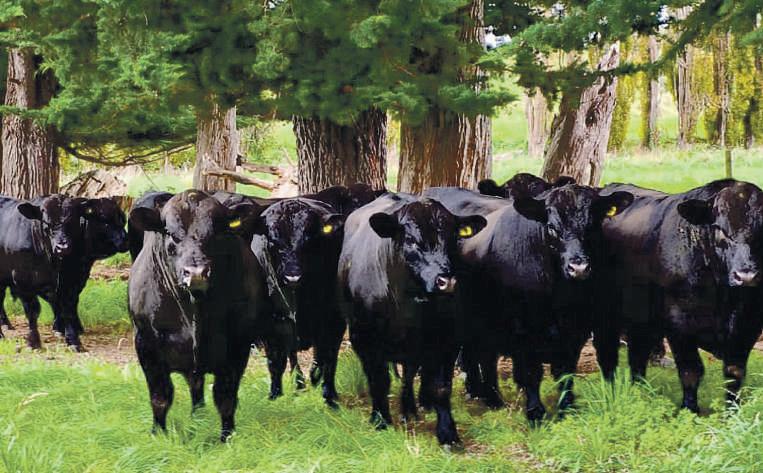
•33Quality rising twoyear oldpedigree and performance recorded Angus bulls.
•All BVD tested free andvaccinated.10in1and Lepto vaccinated •Fully guaranteed for three breeding seasons
•DNA profiledand 72kgenomically assessed/enhanced EBV’s
•MtMable Angus a5 star recordersince the star ratingbegan
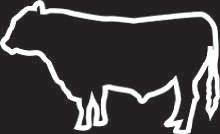


•MtMable herdcompletely free of all knowngenetic defects.
•FreedeliveryinNorth Island. South Island at our discretion
SaleisMonday June 9th2025. 2.30pm.





